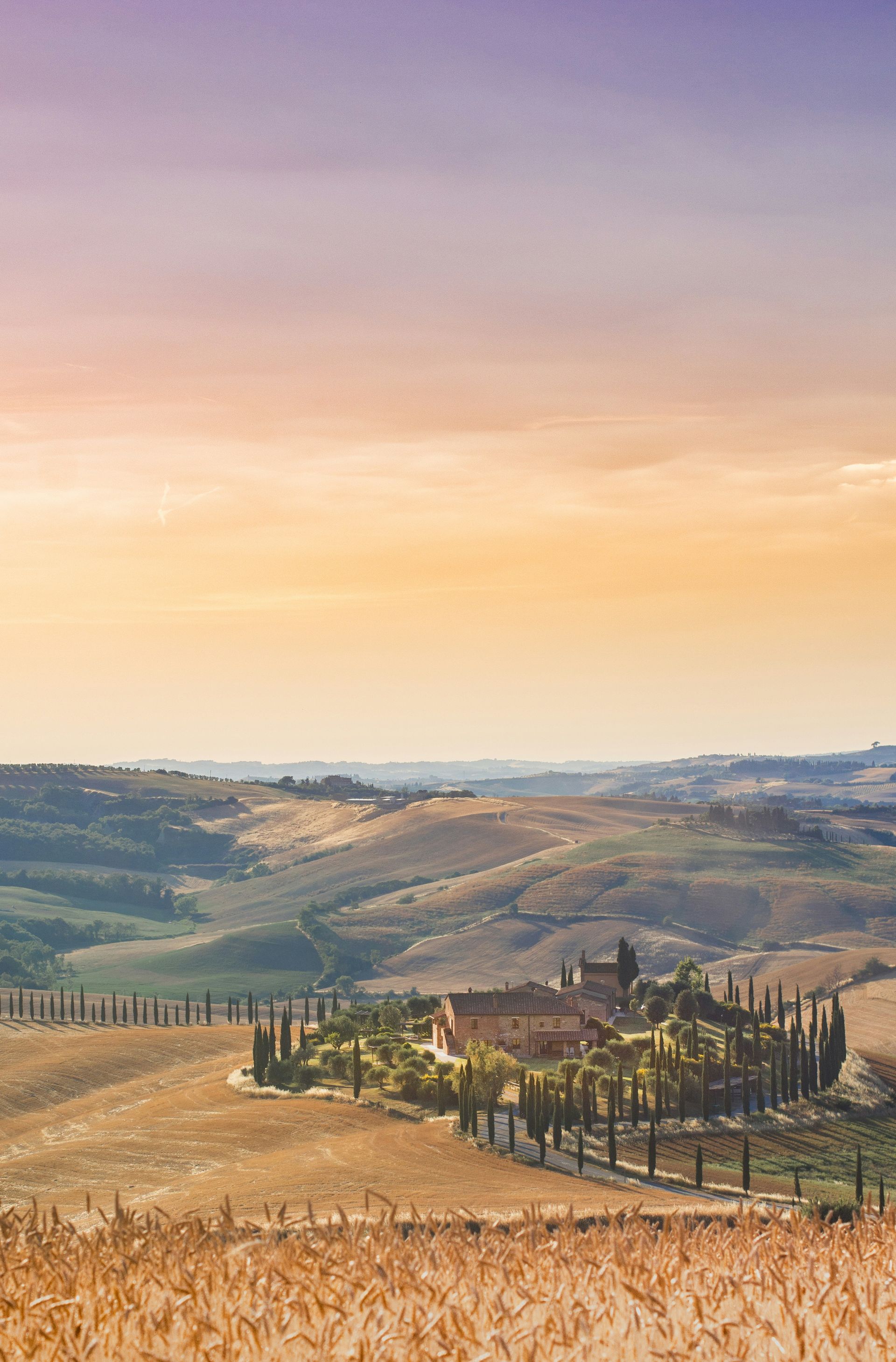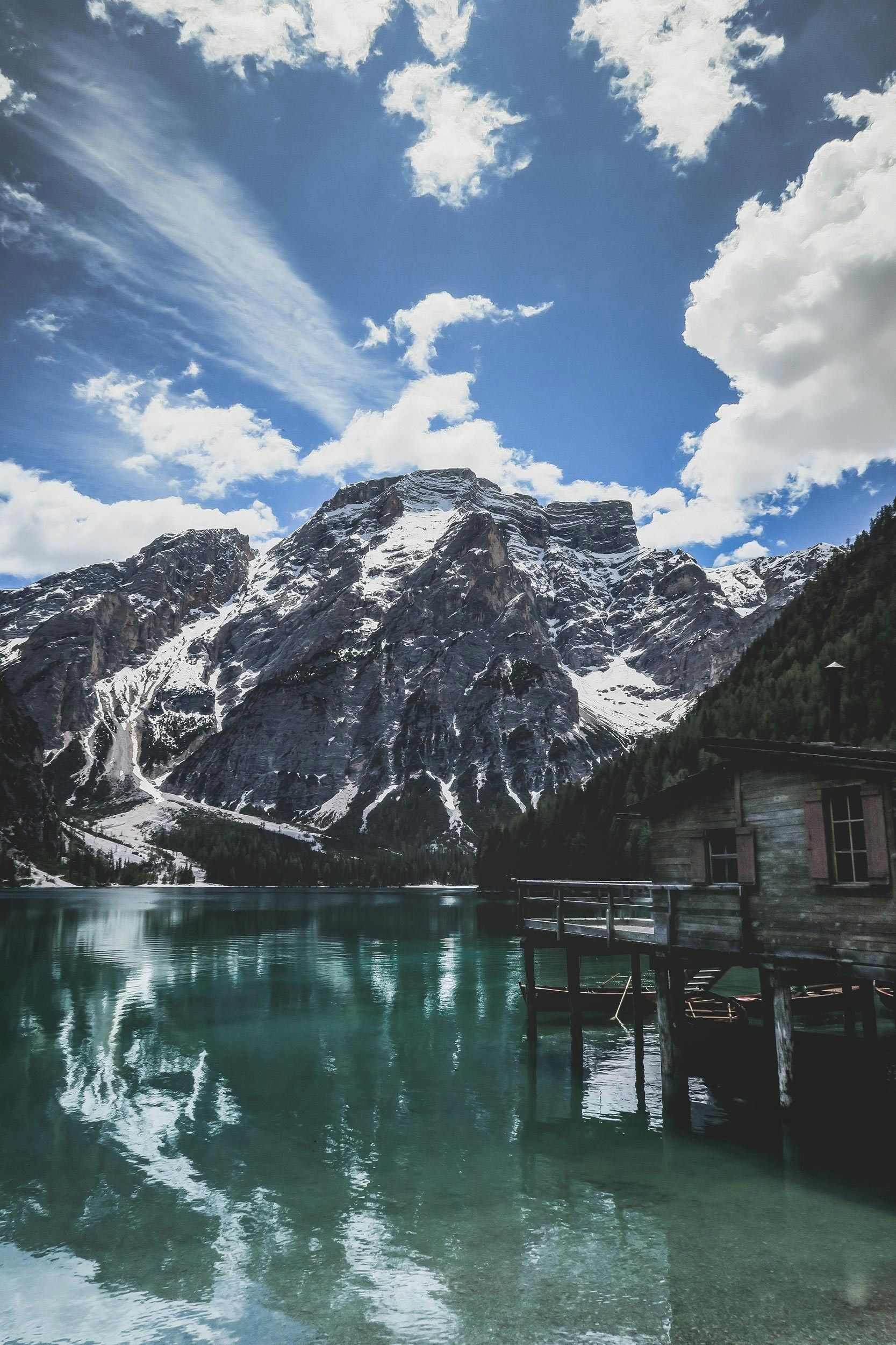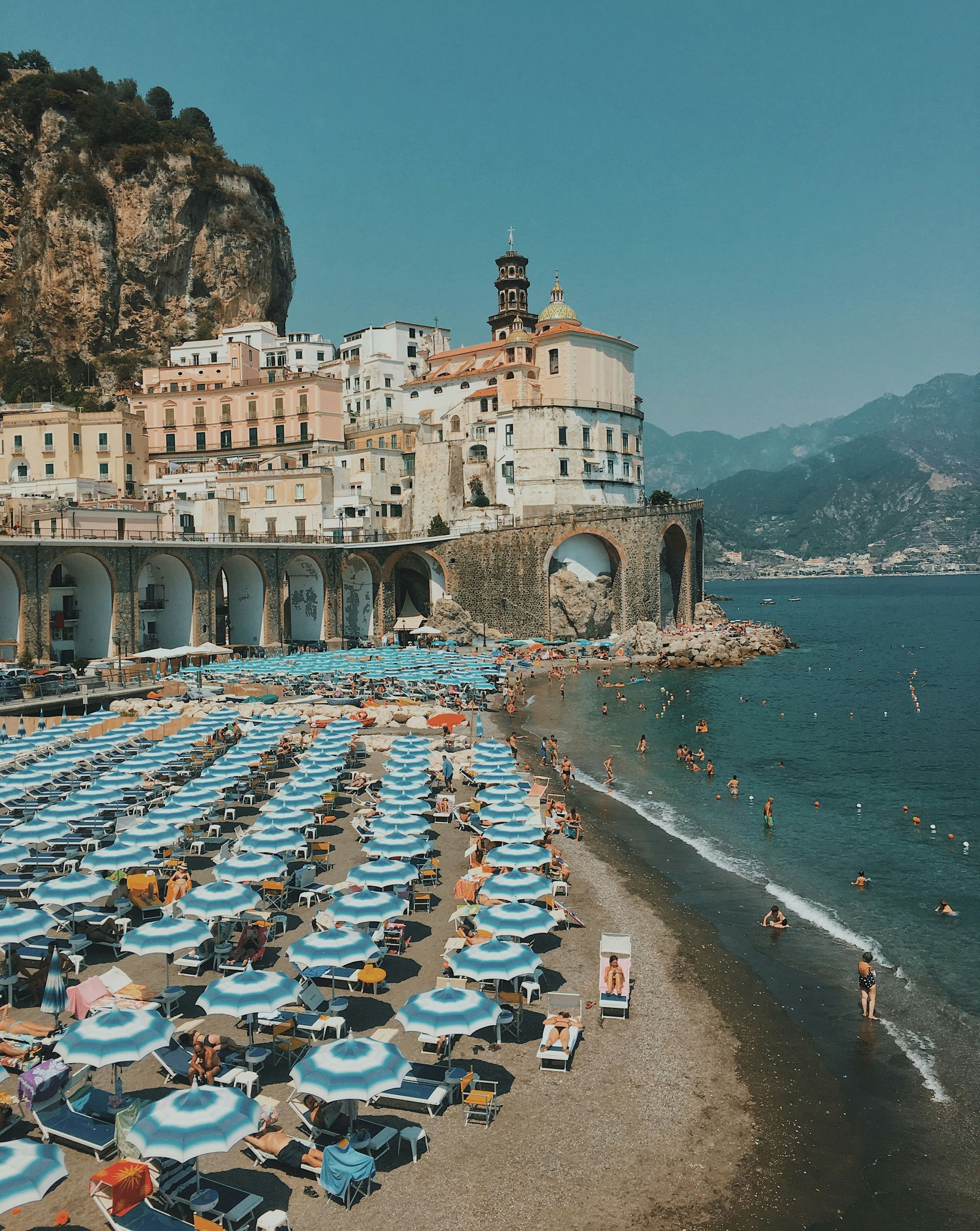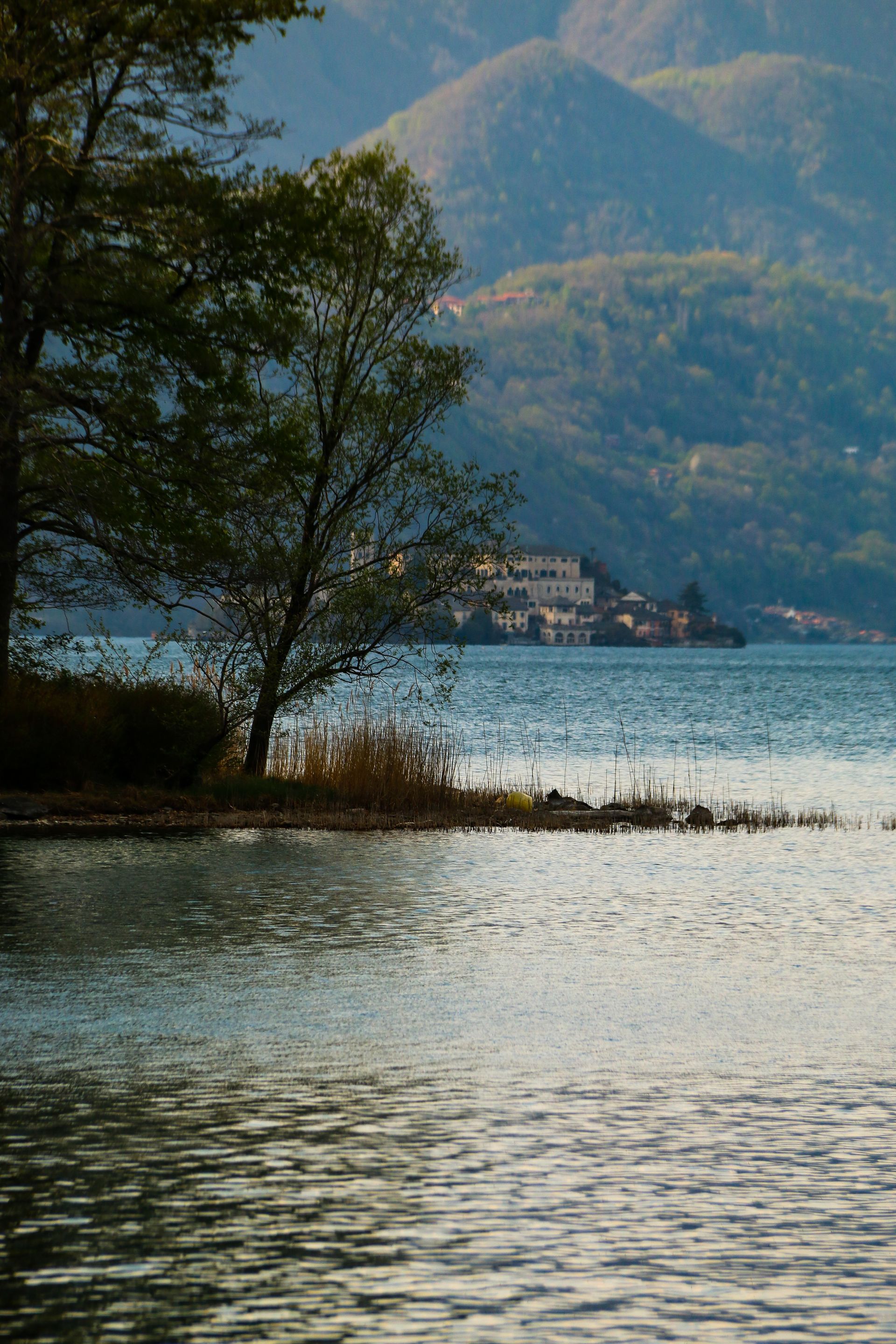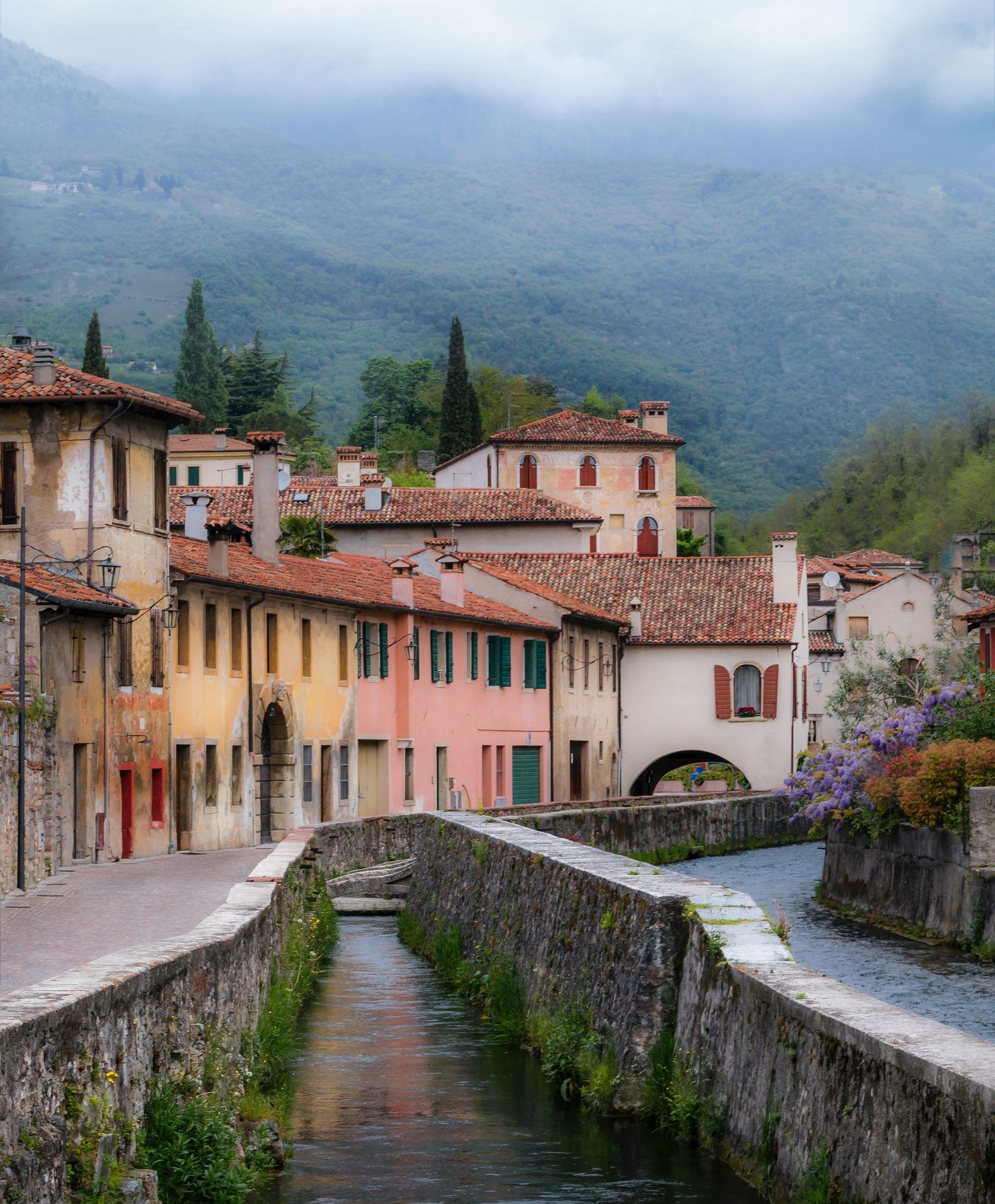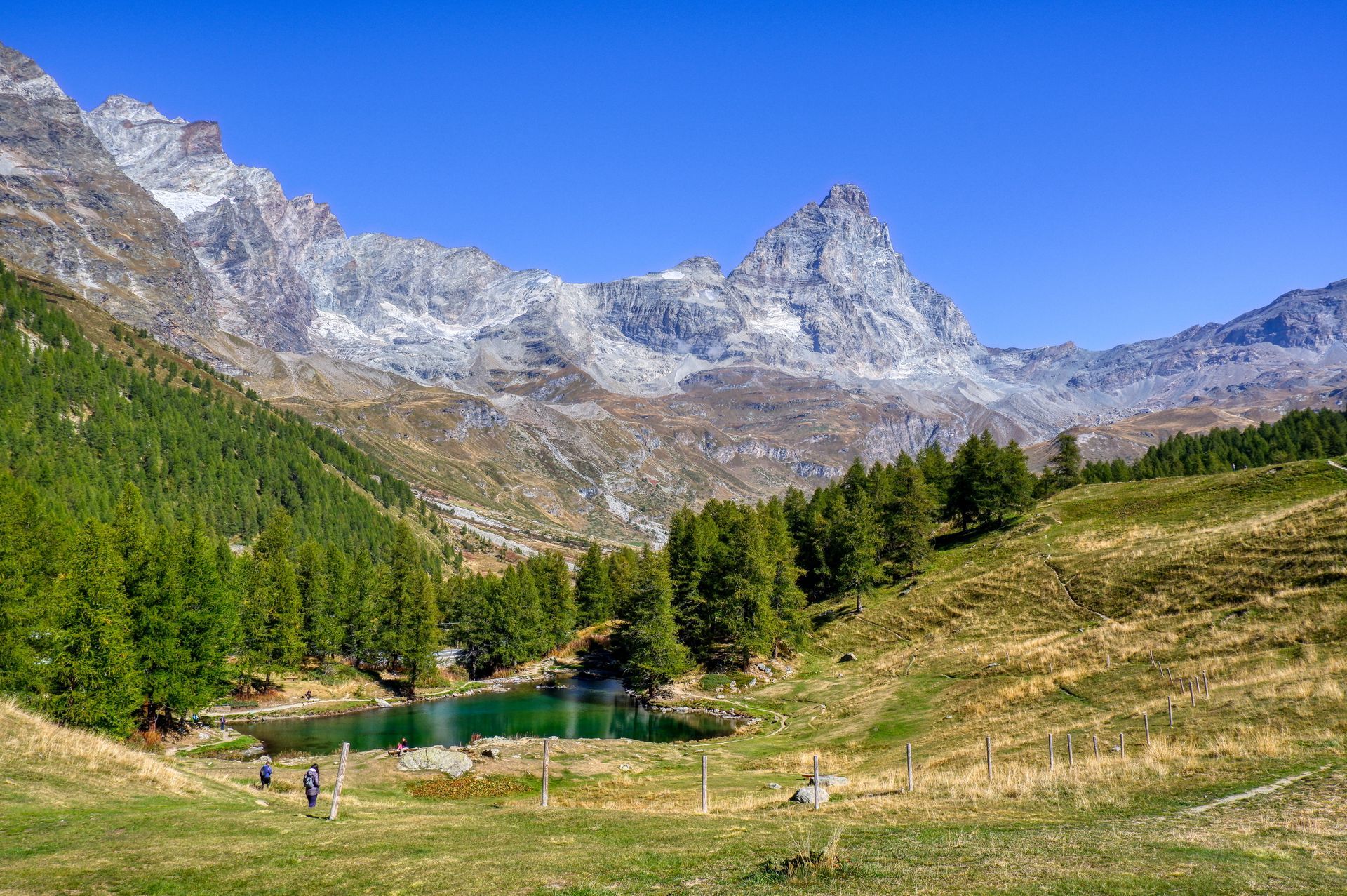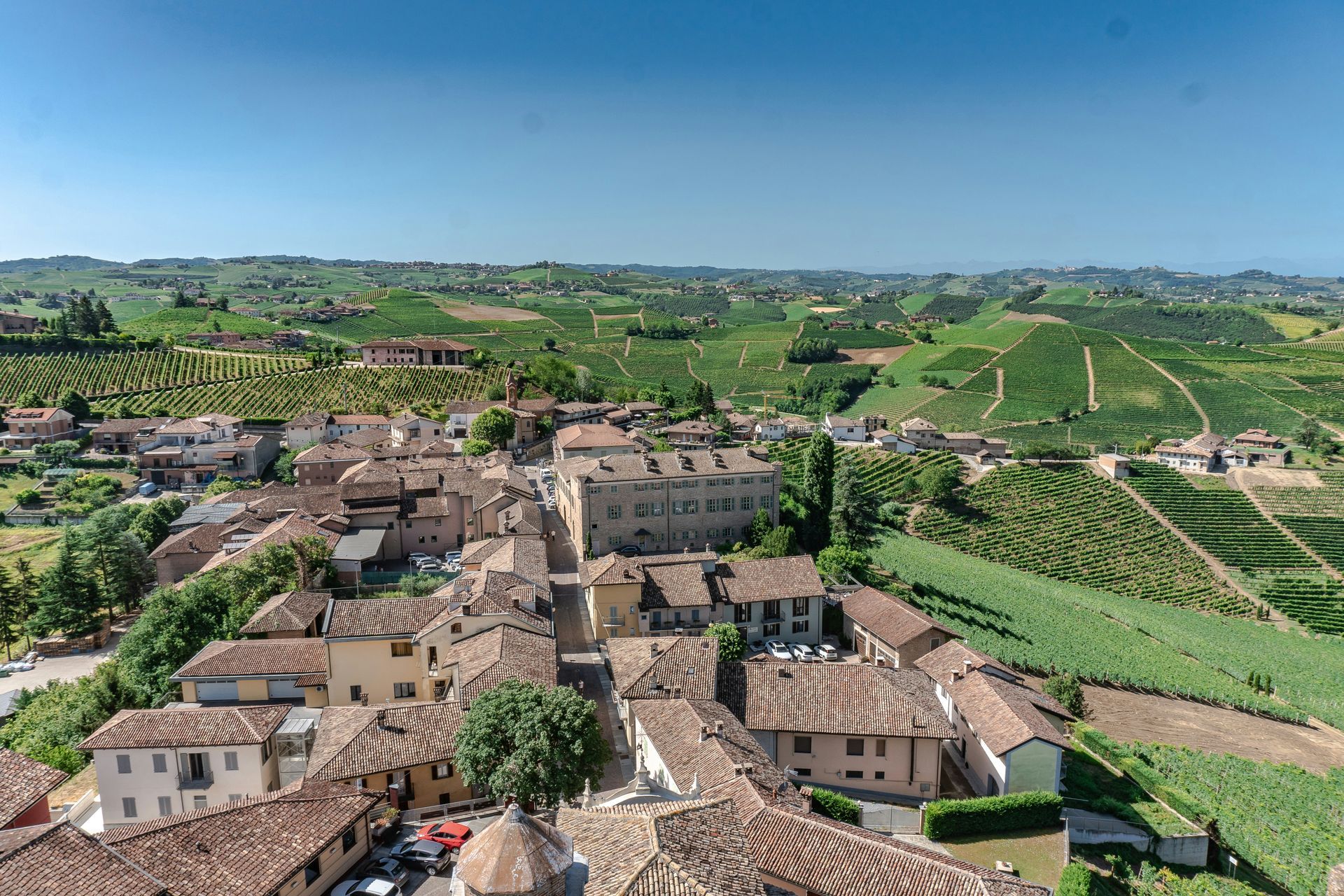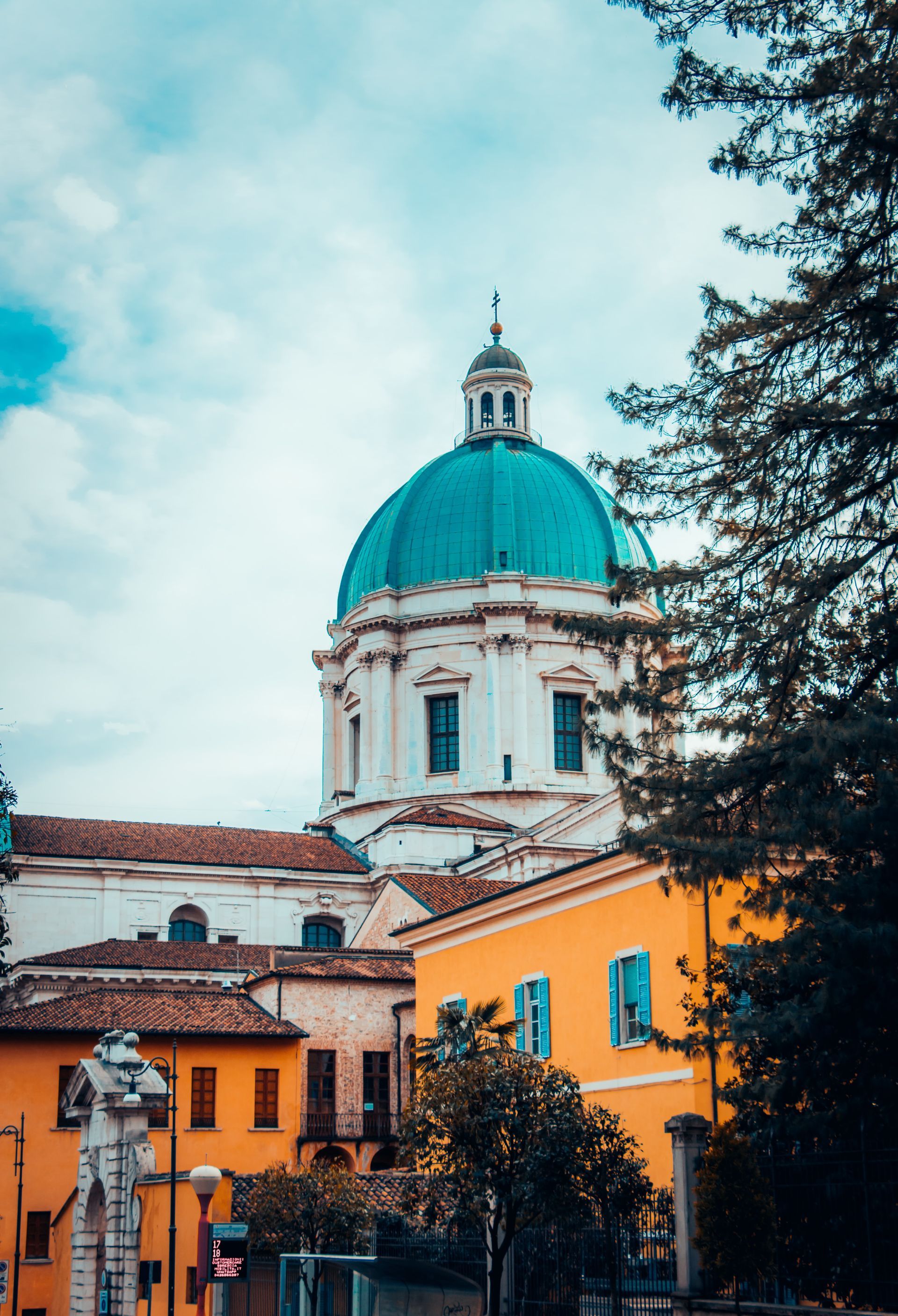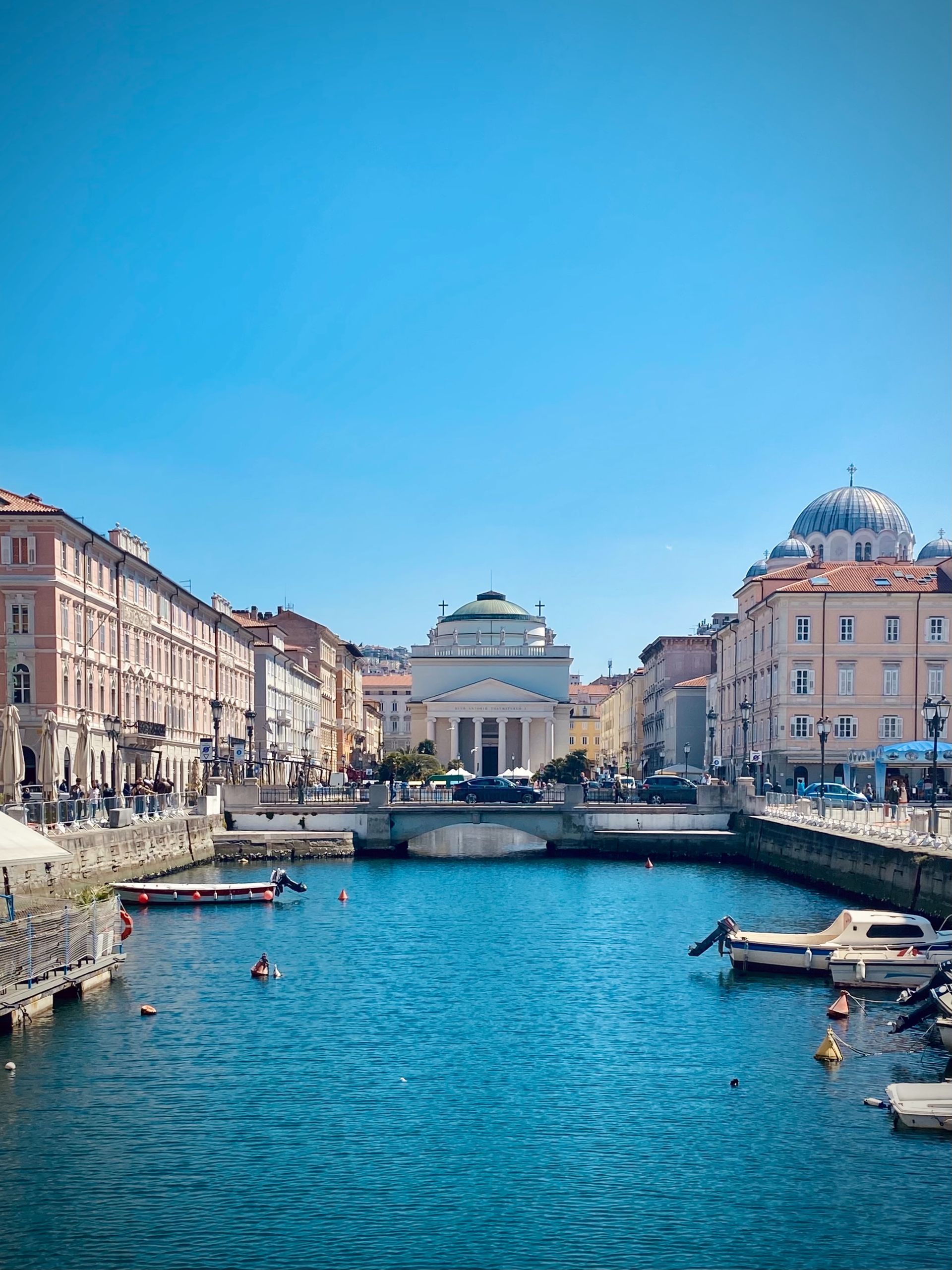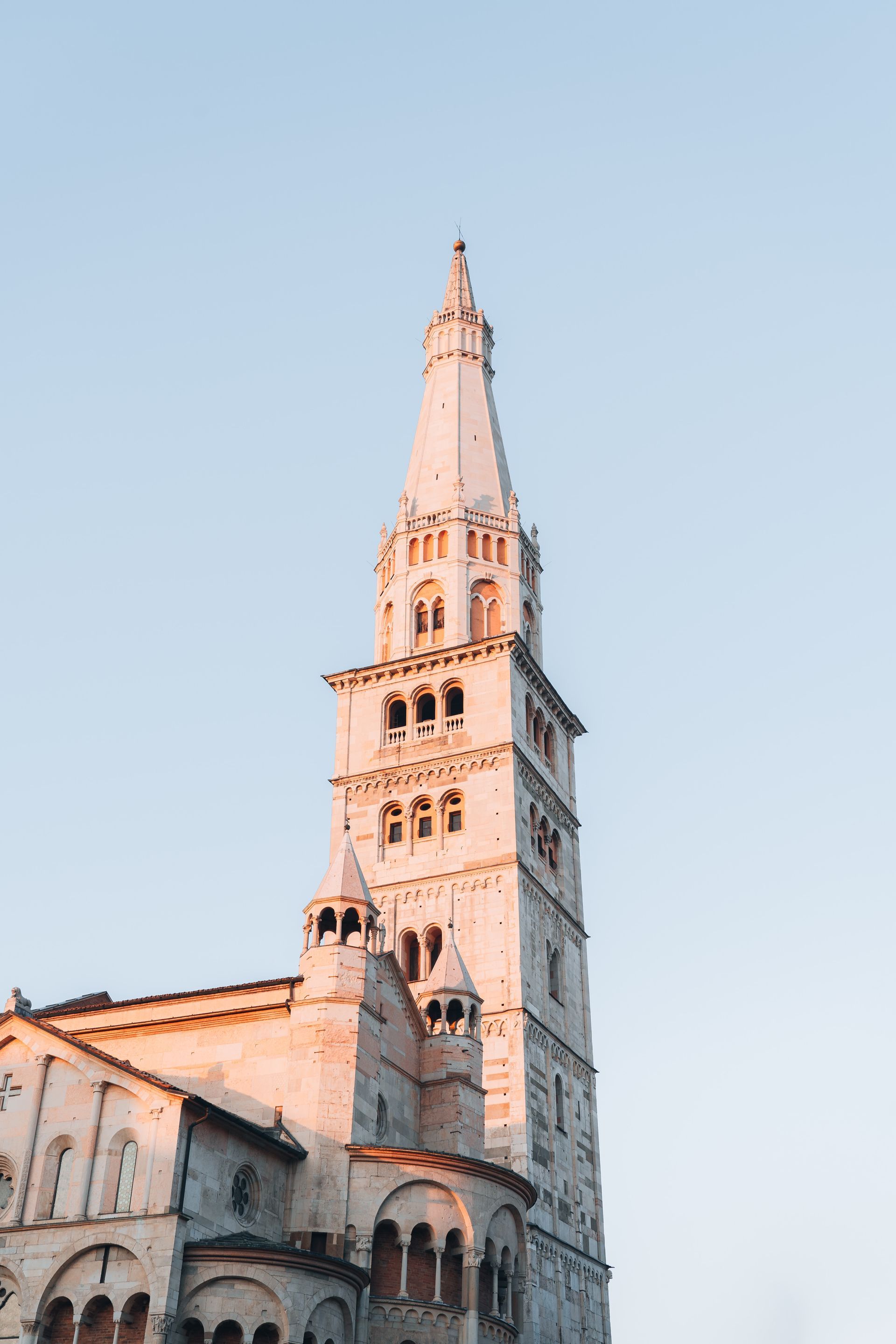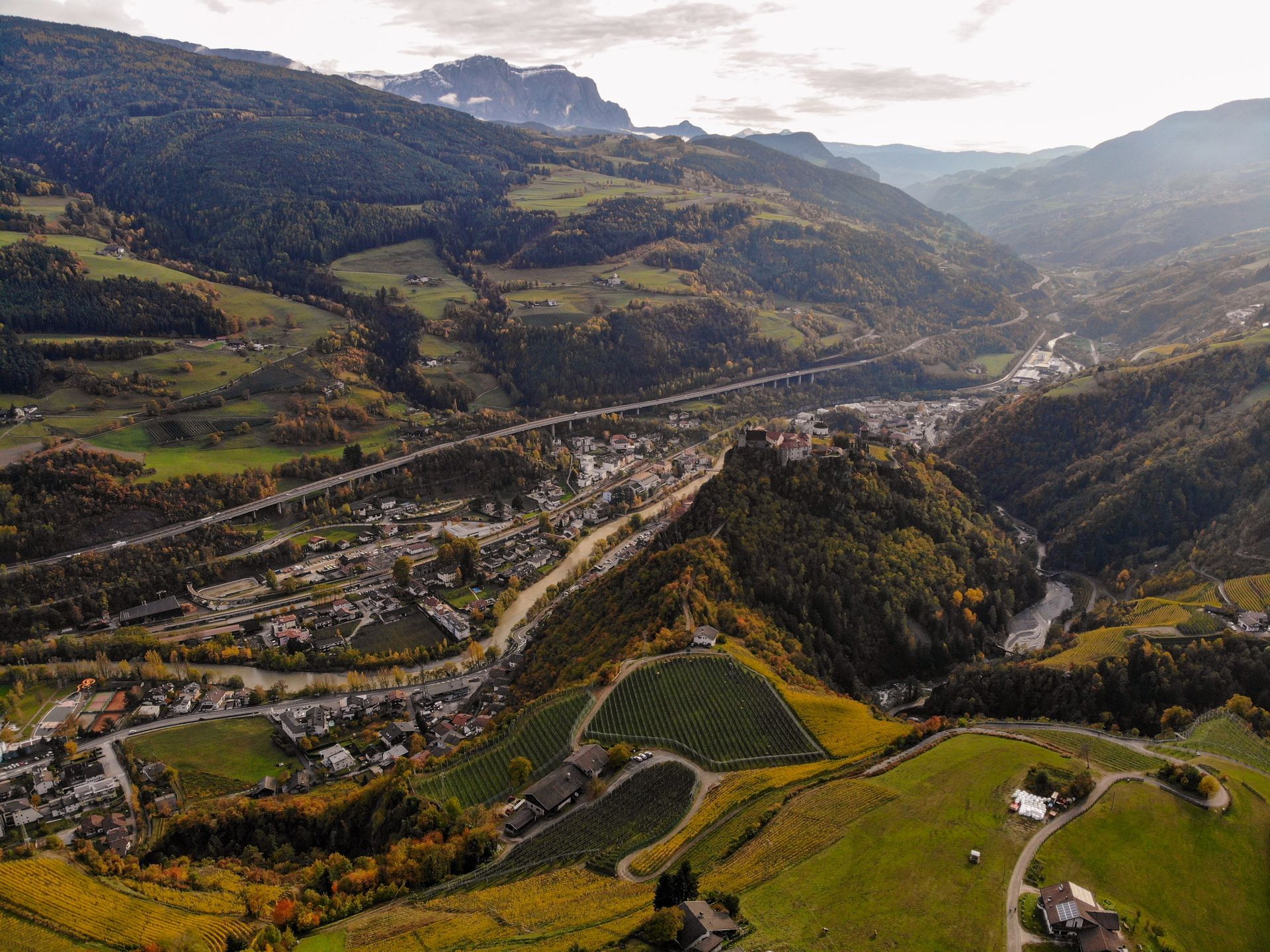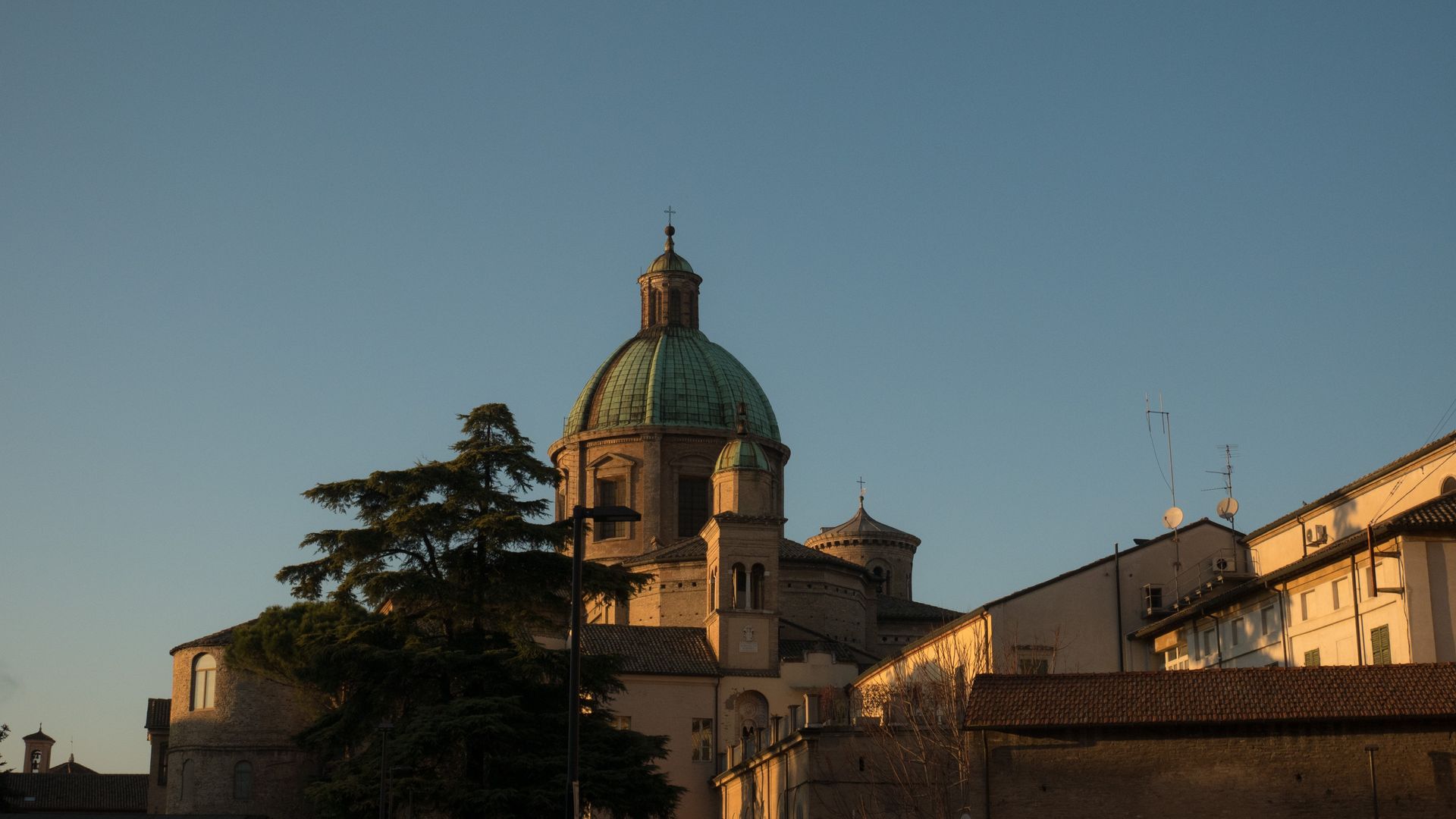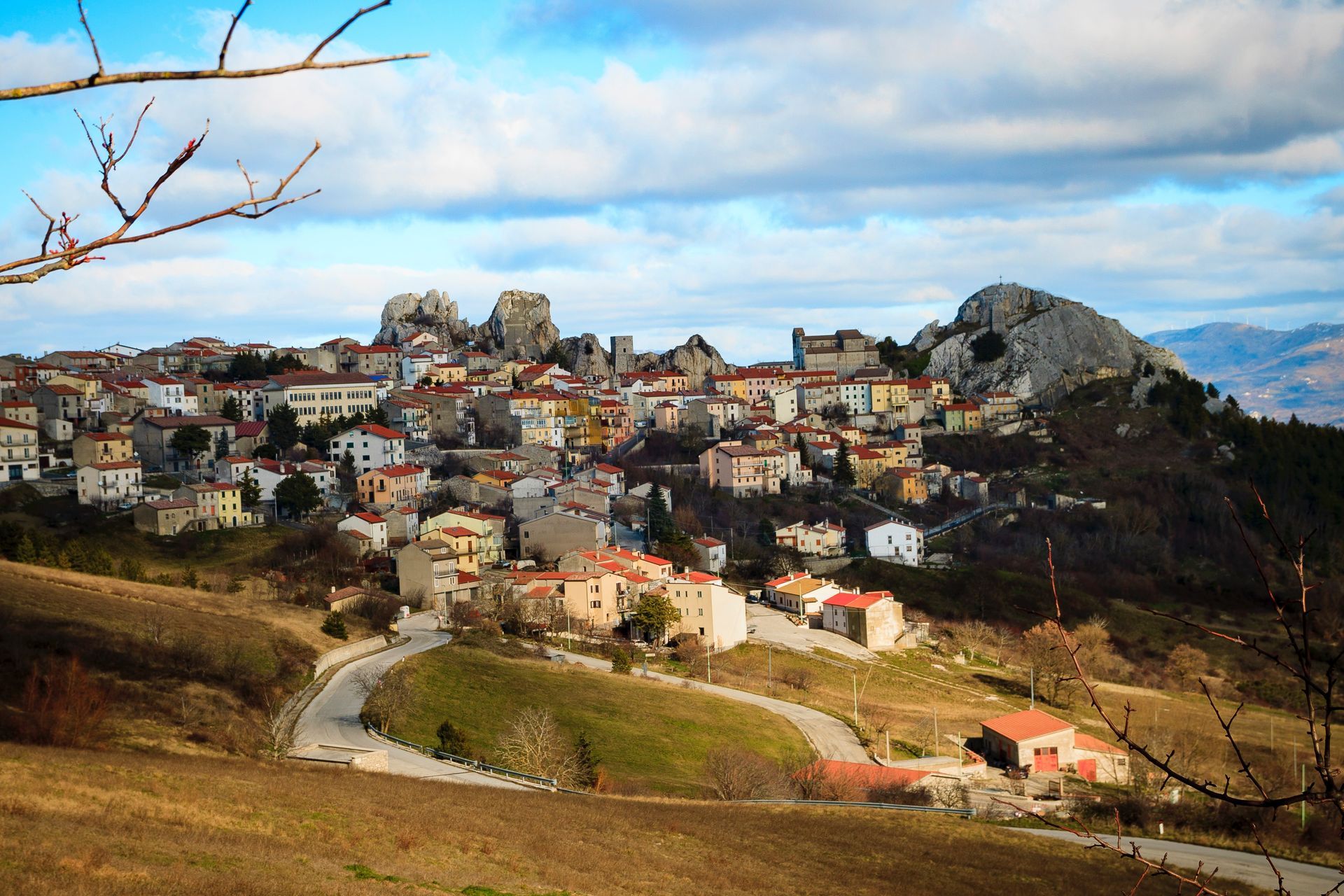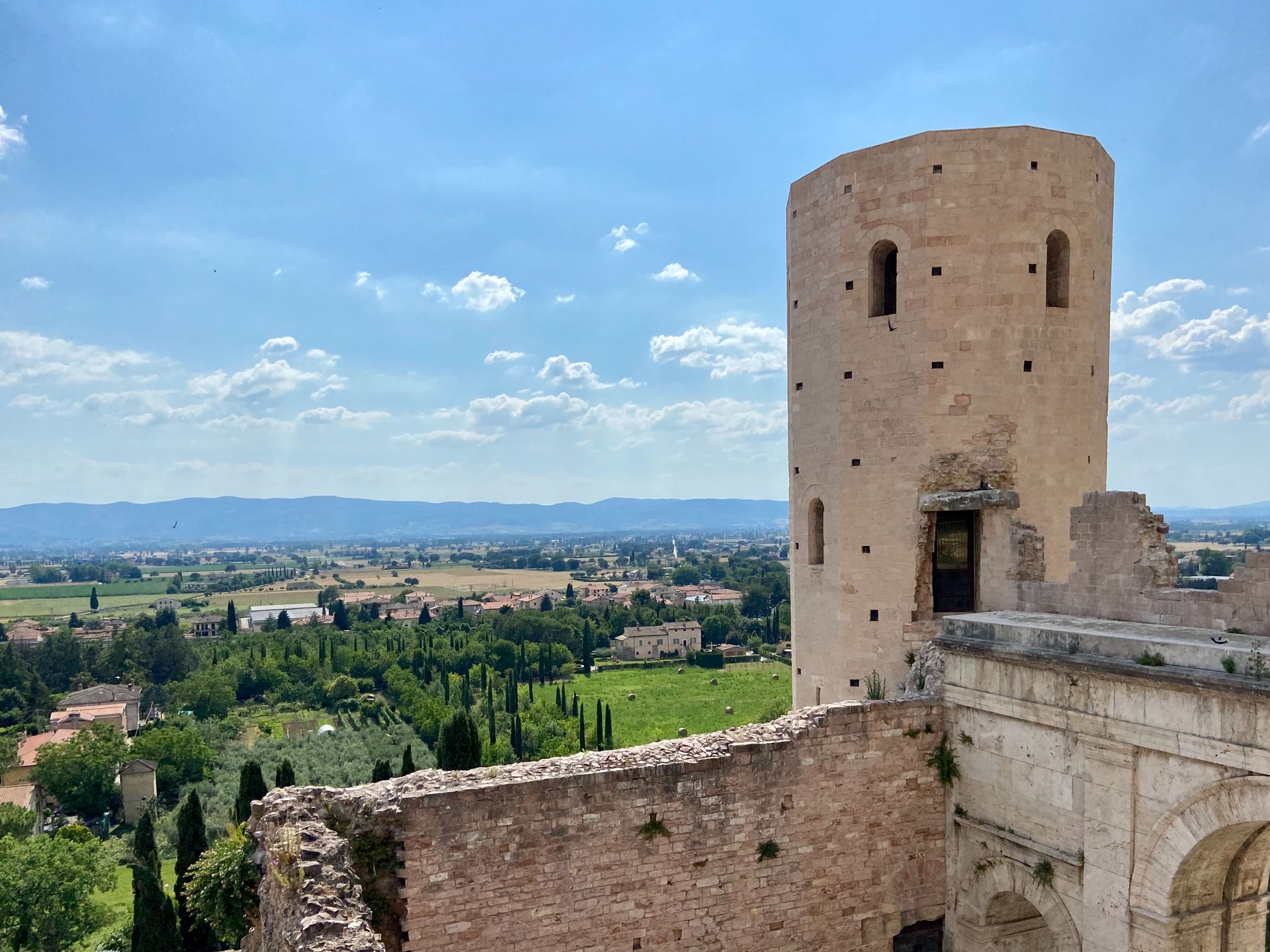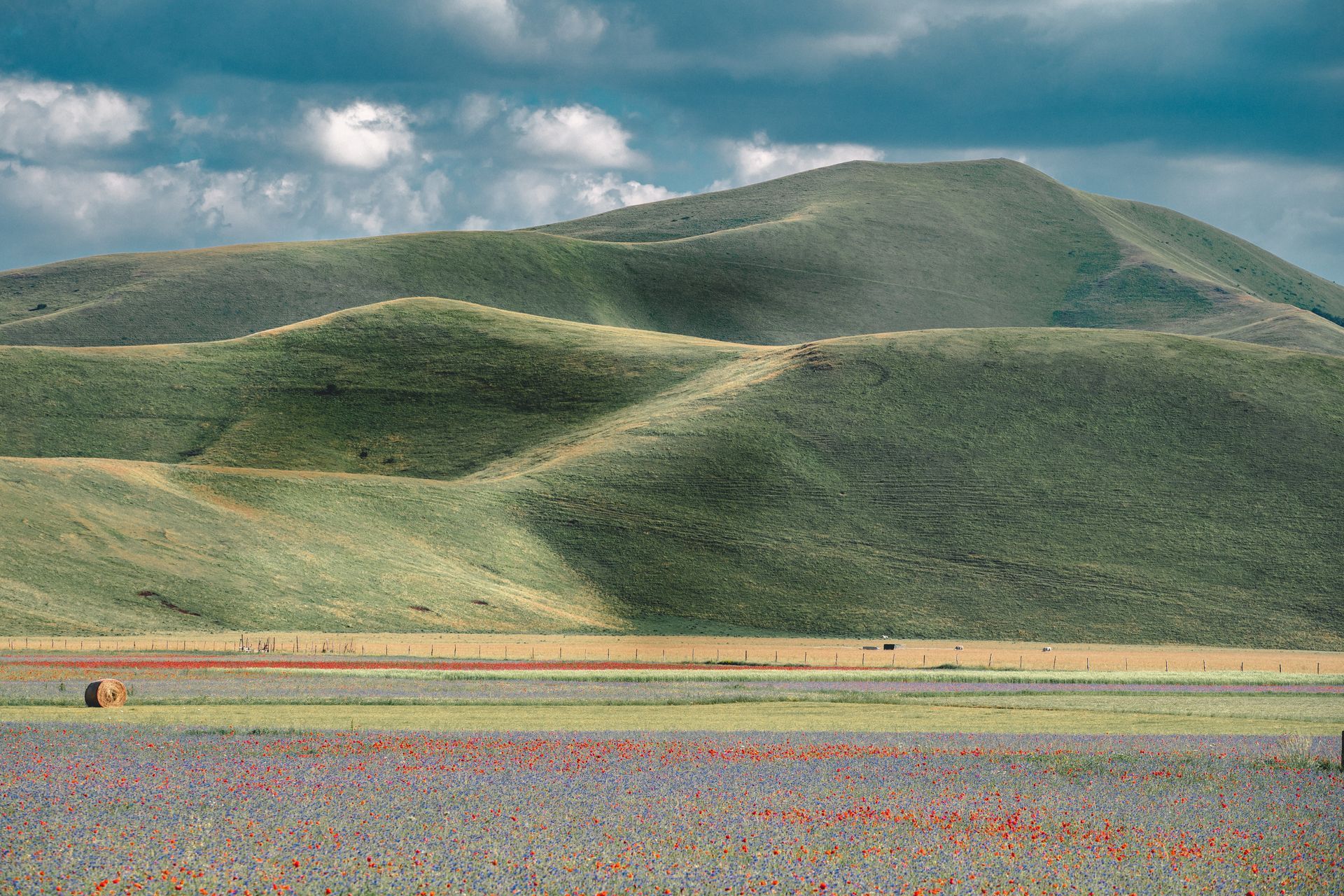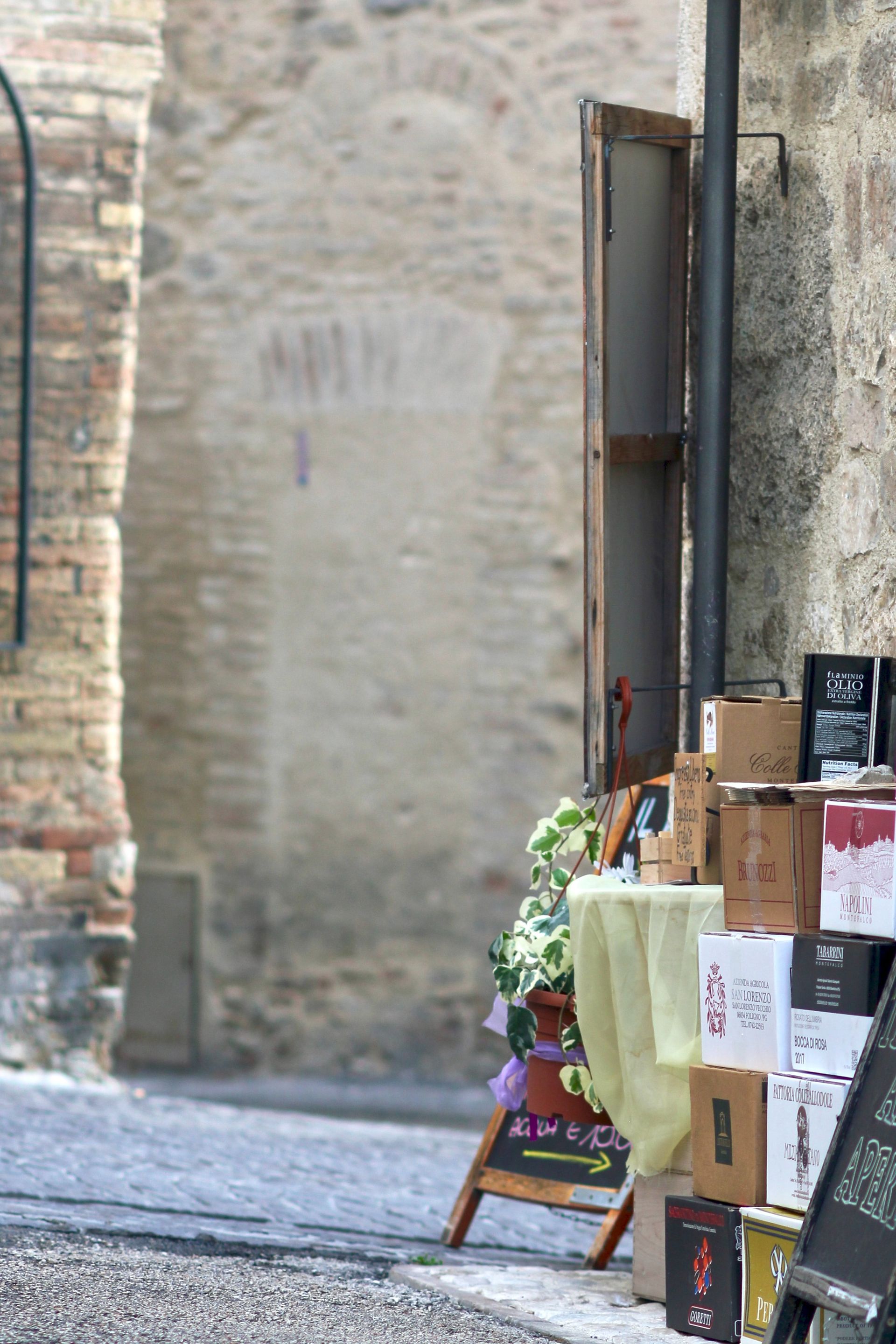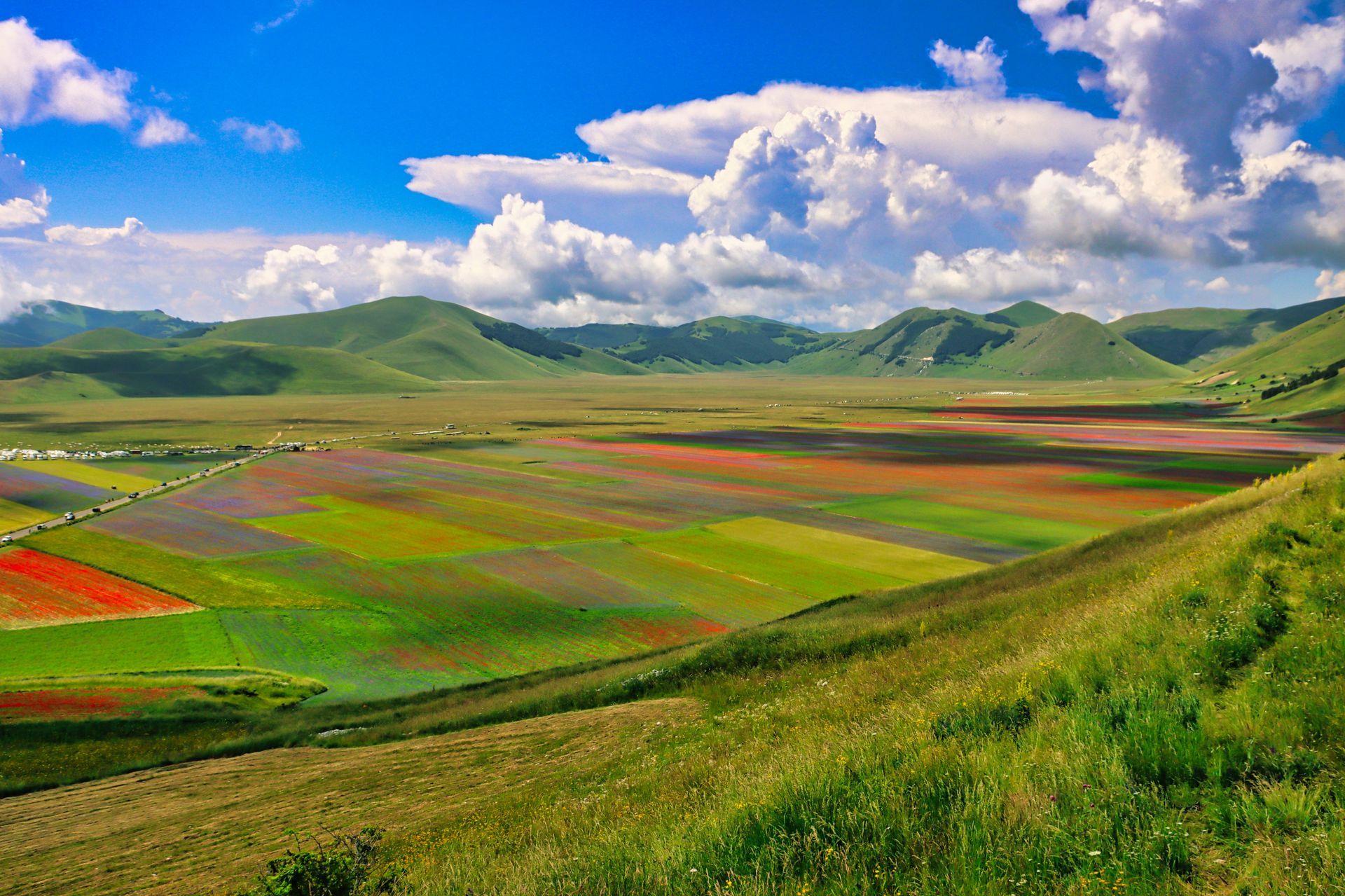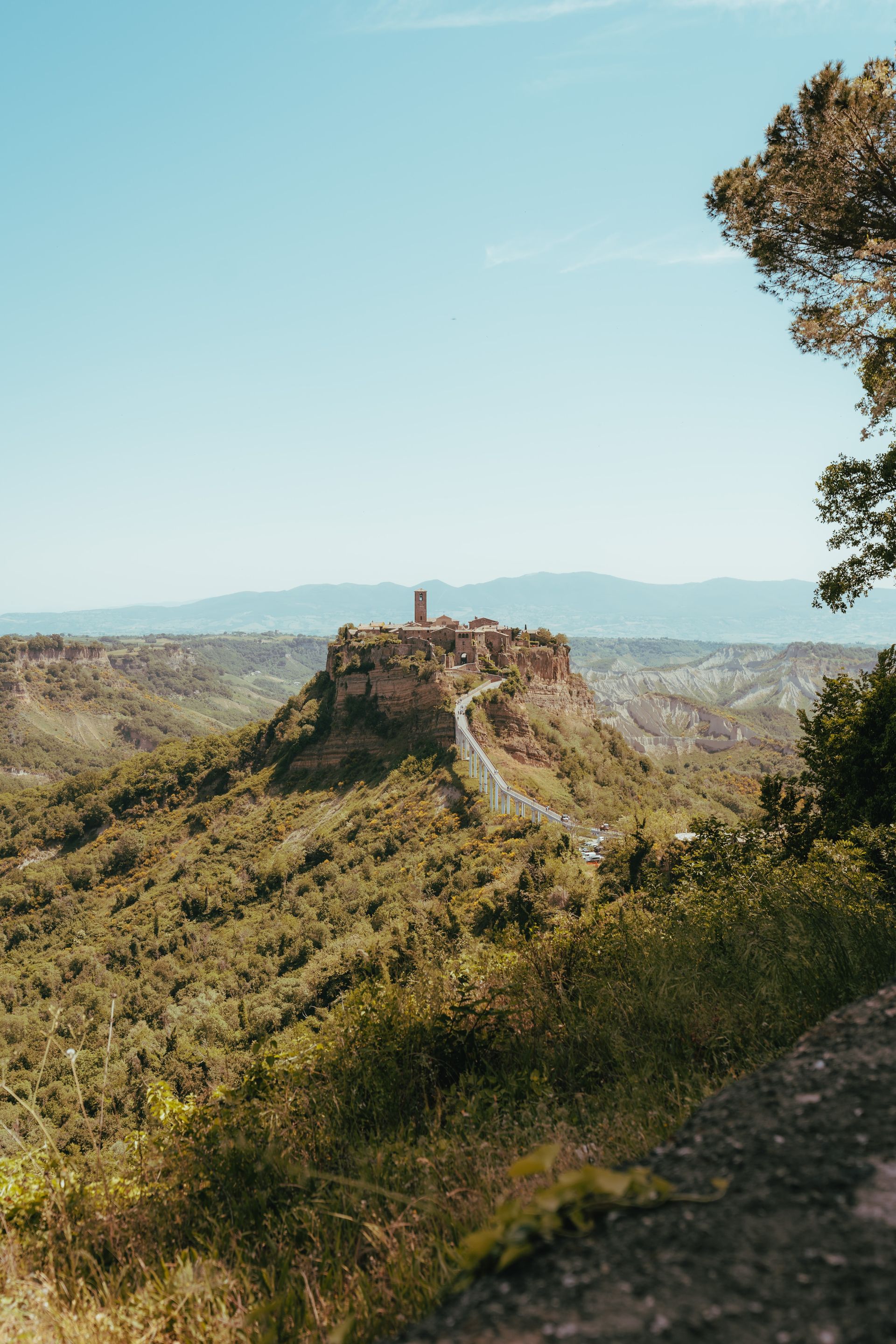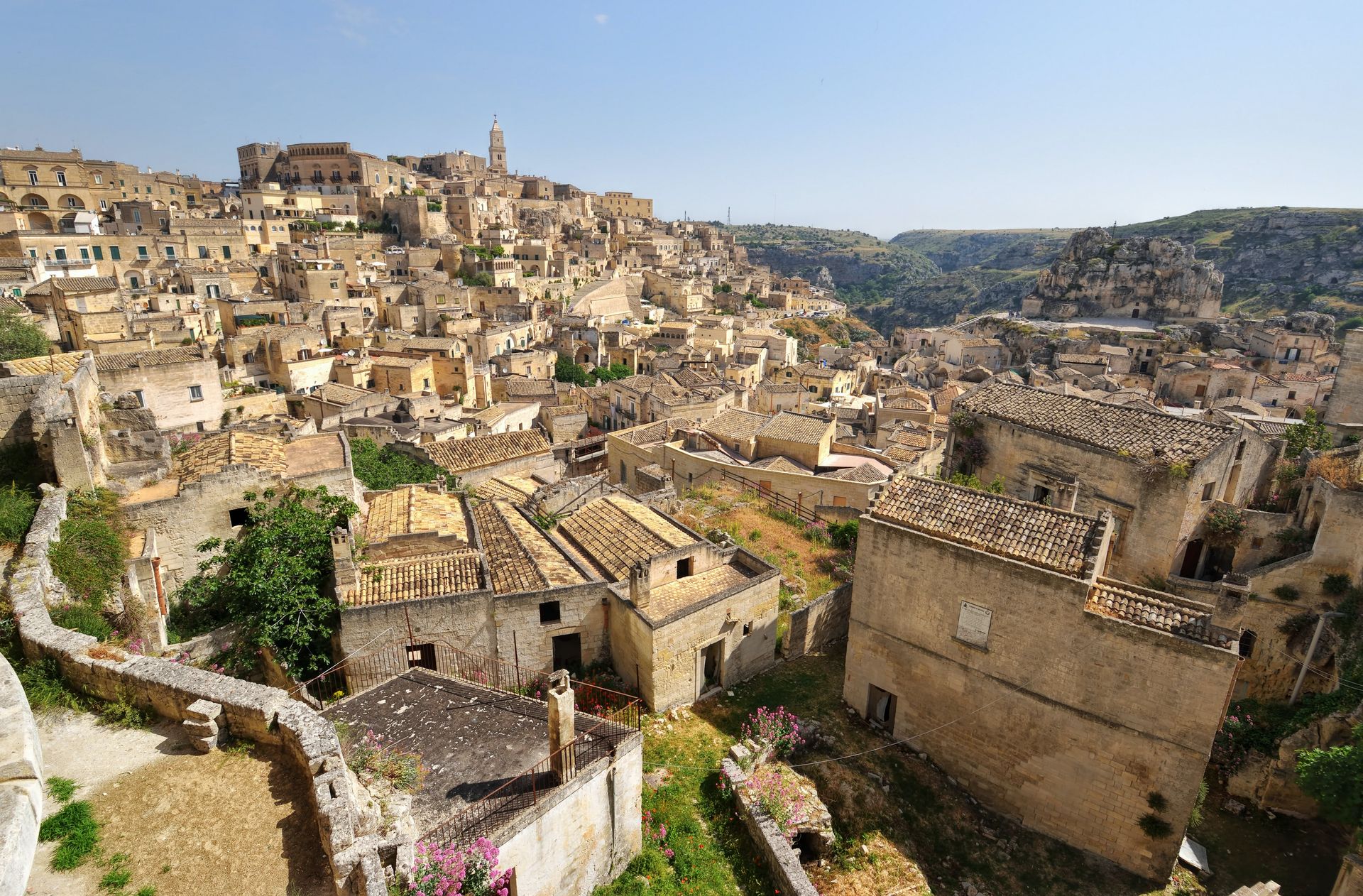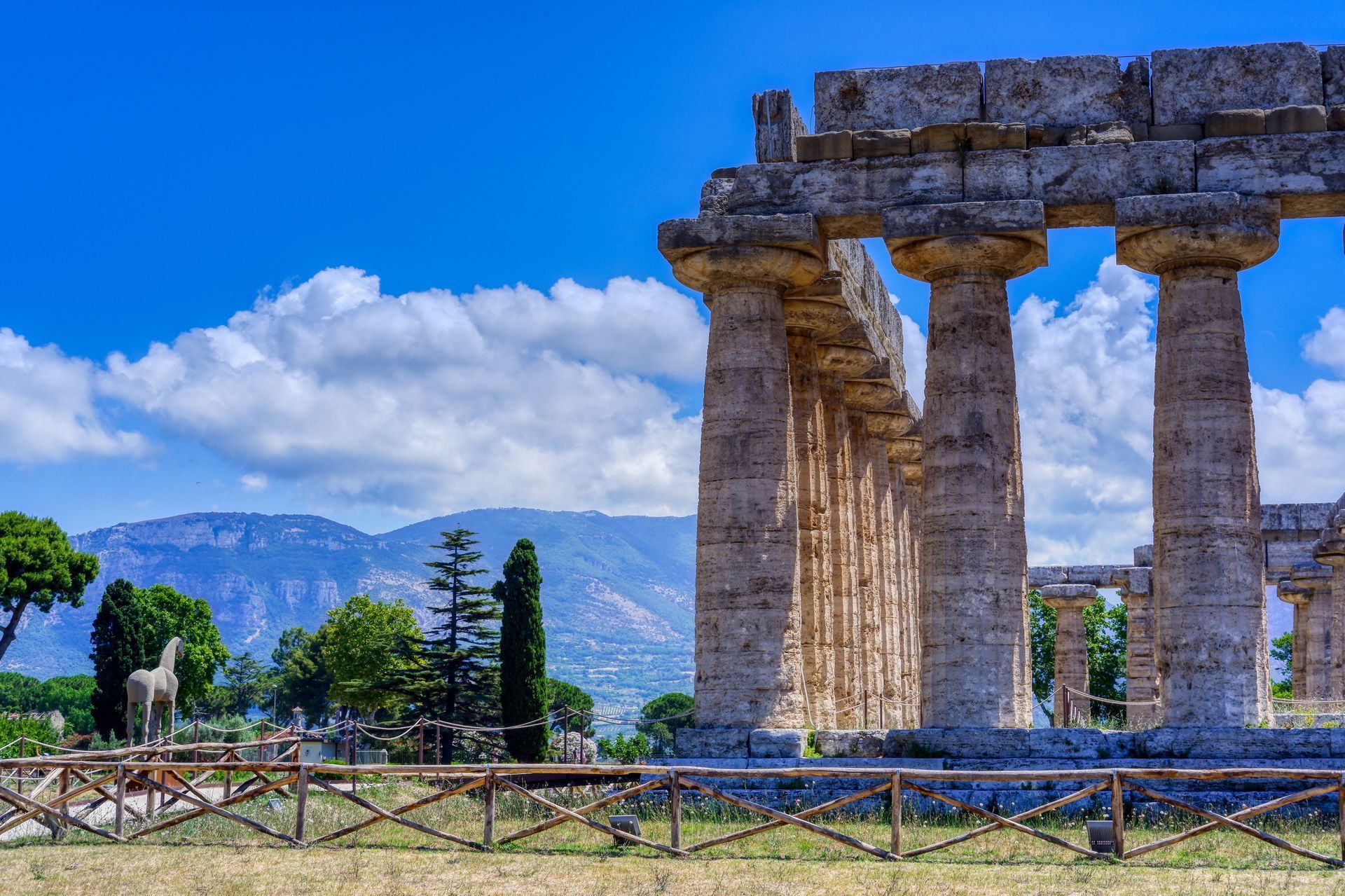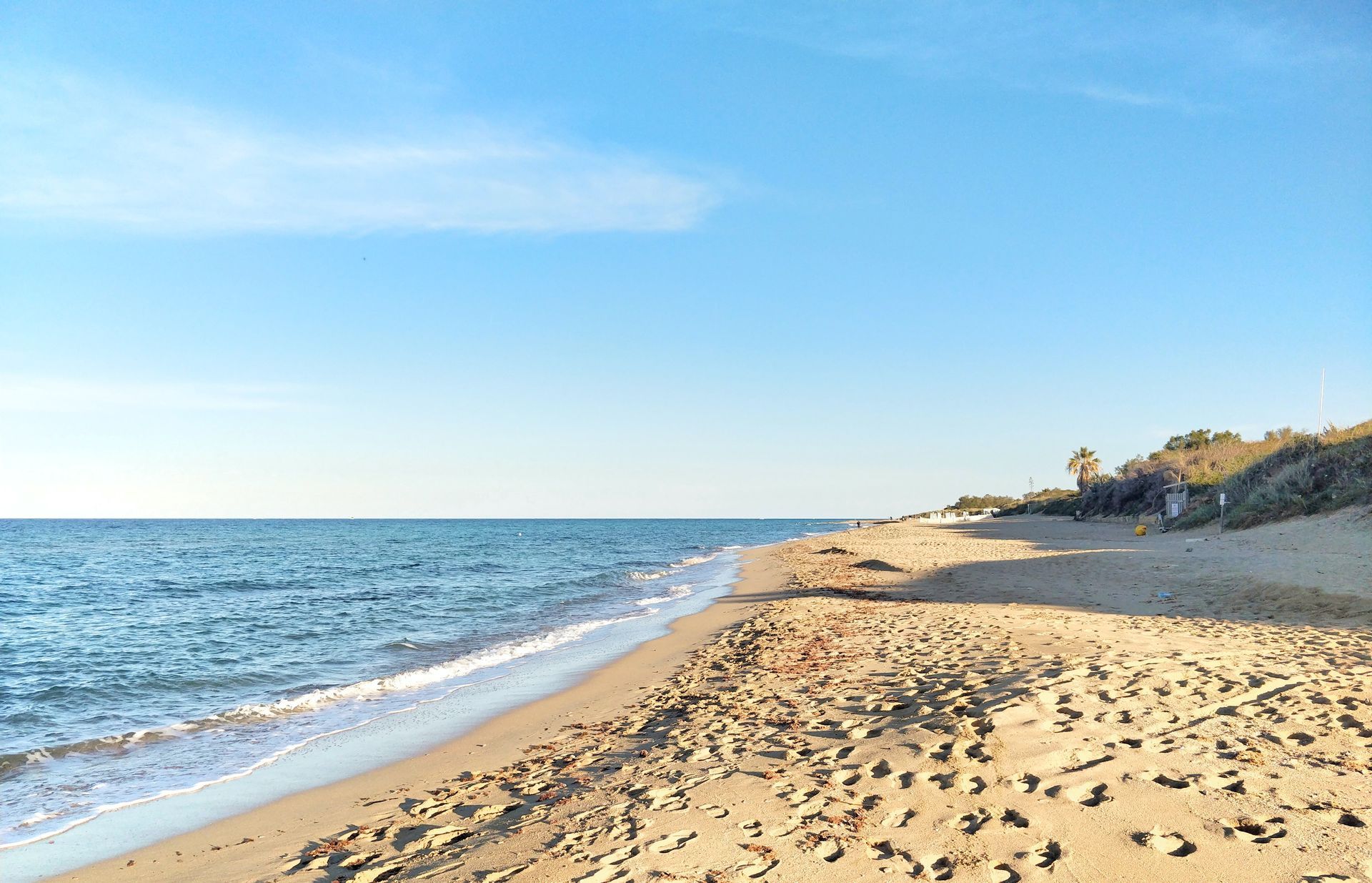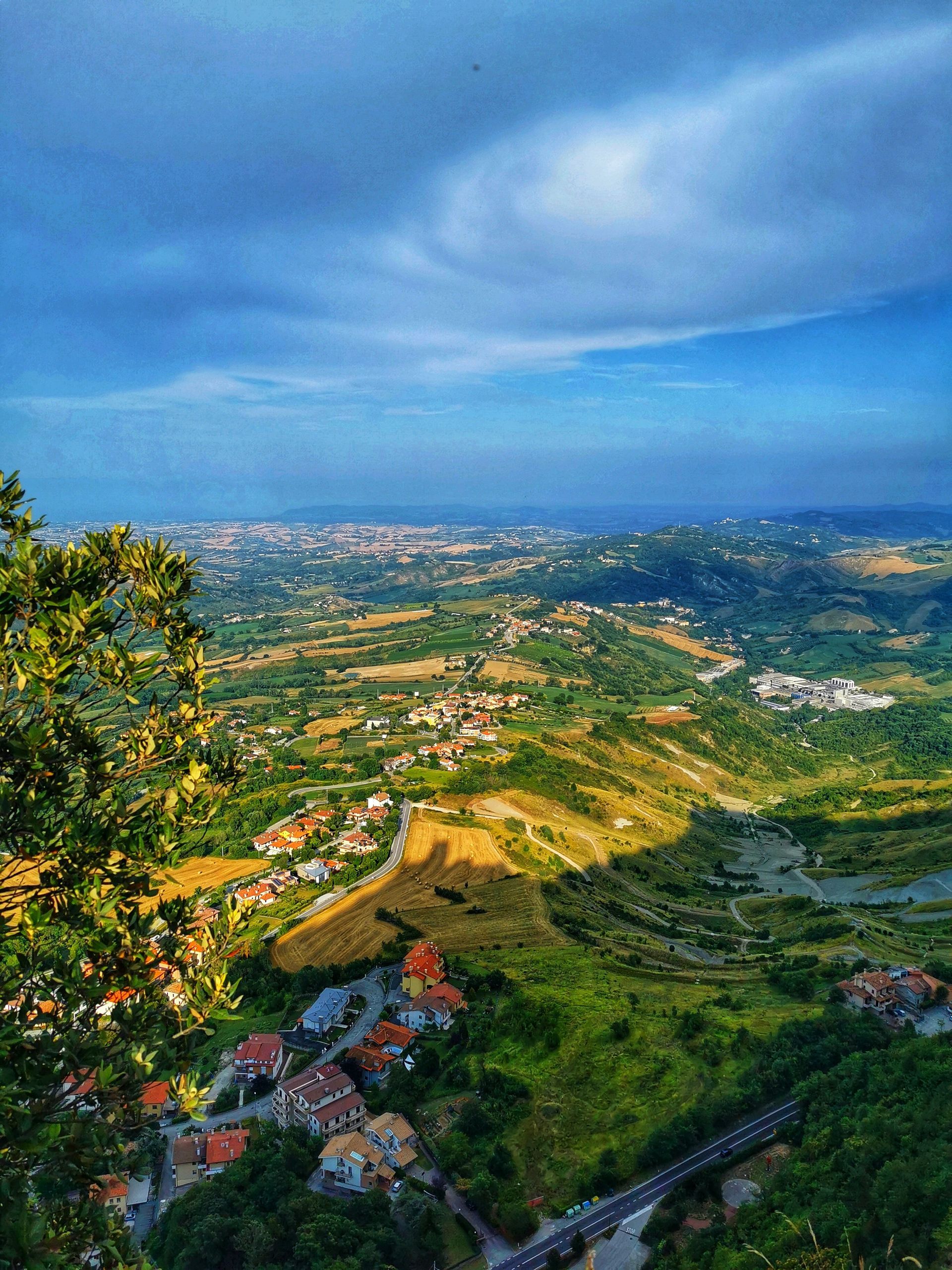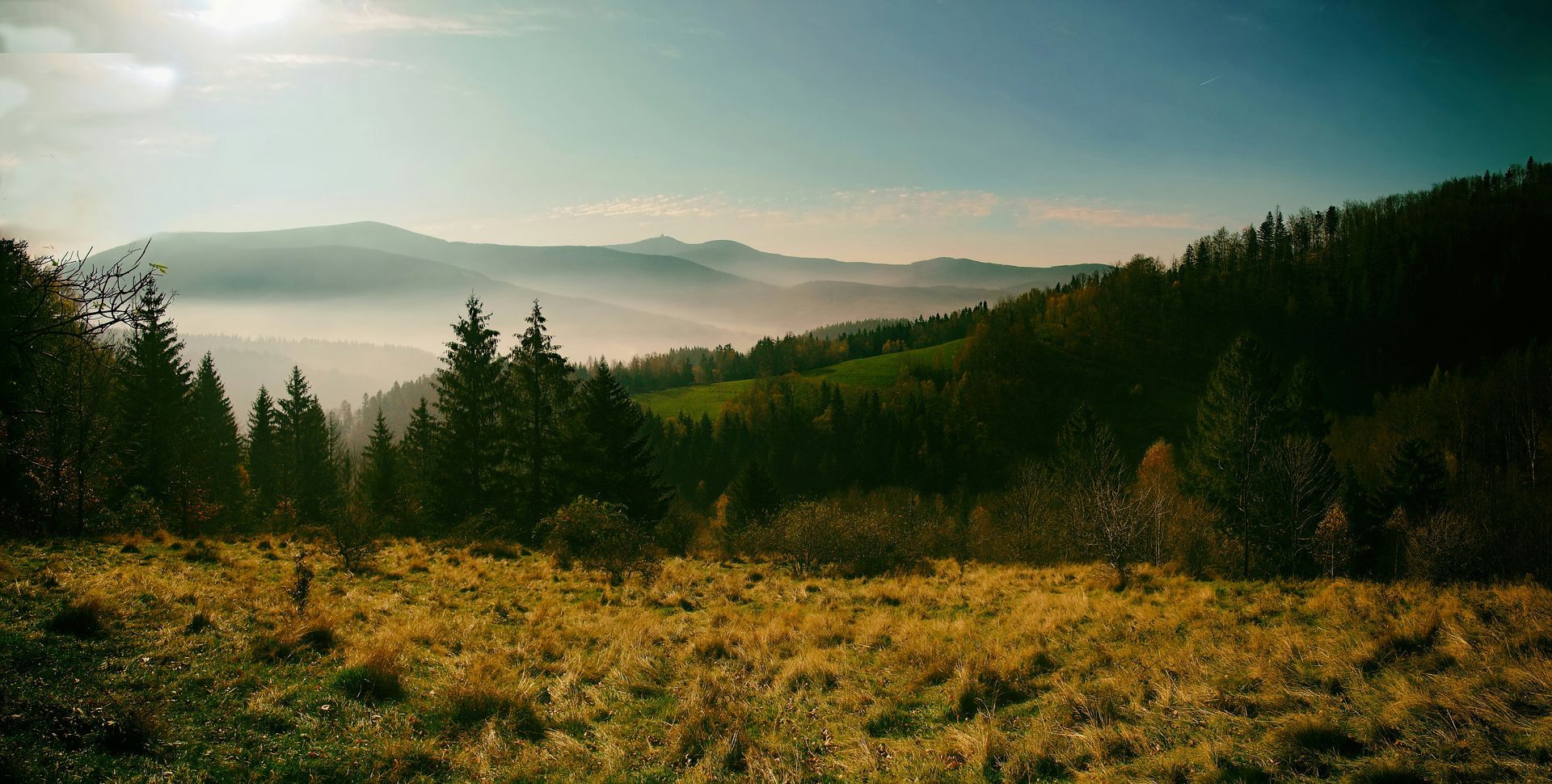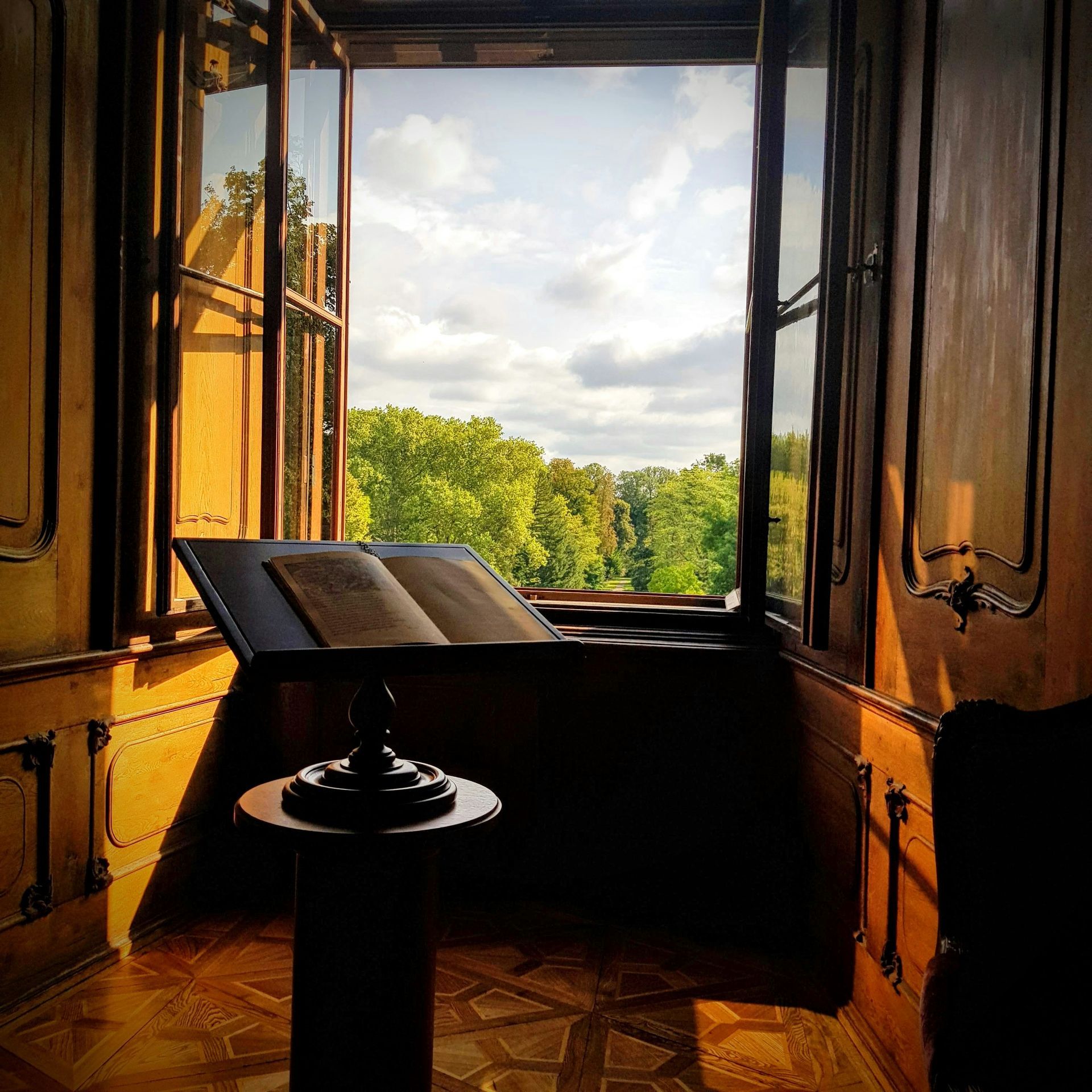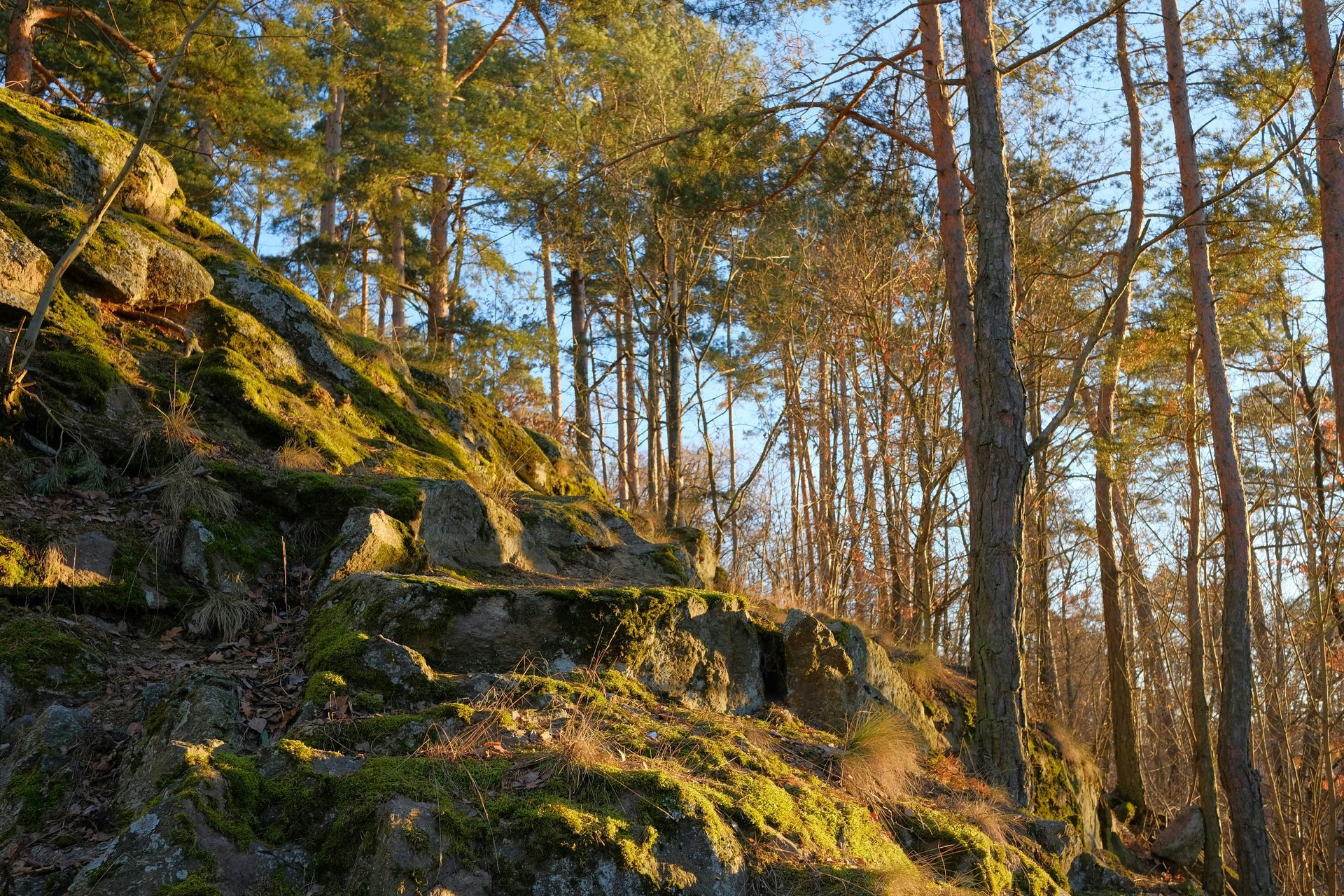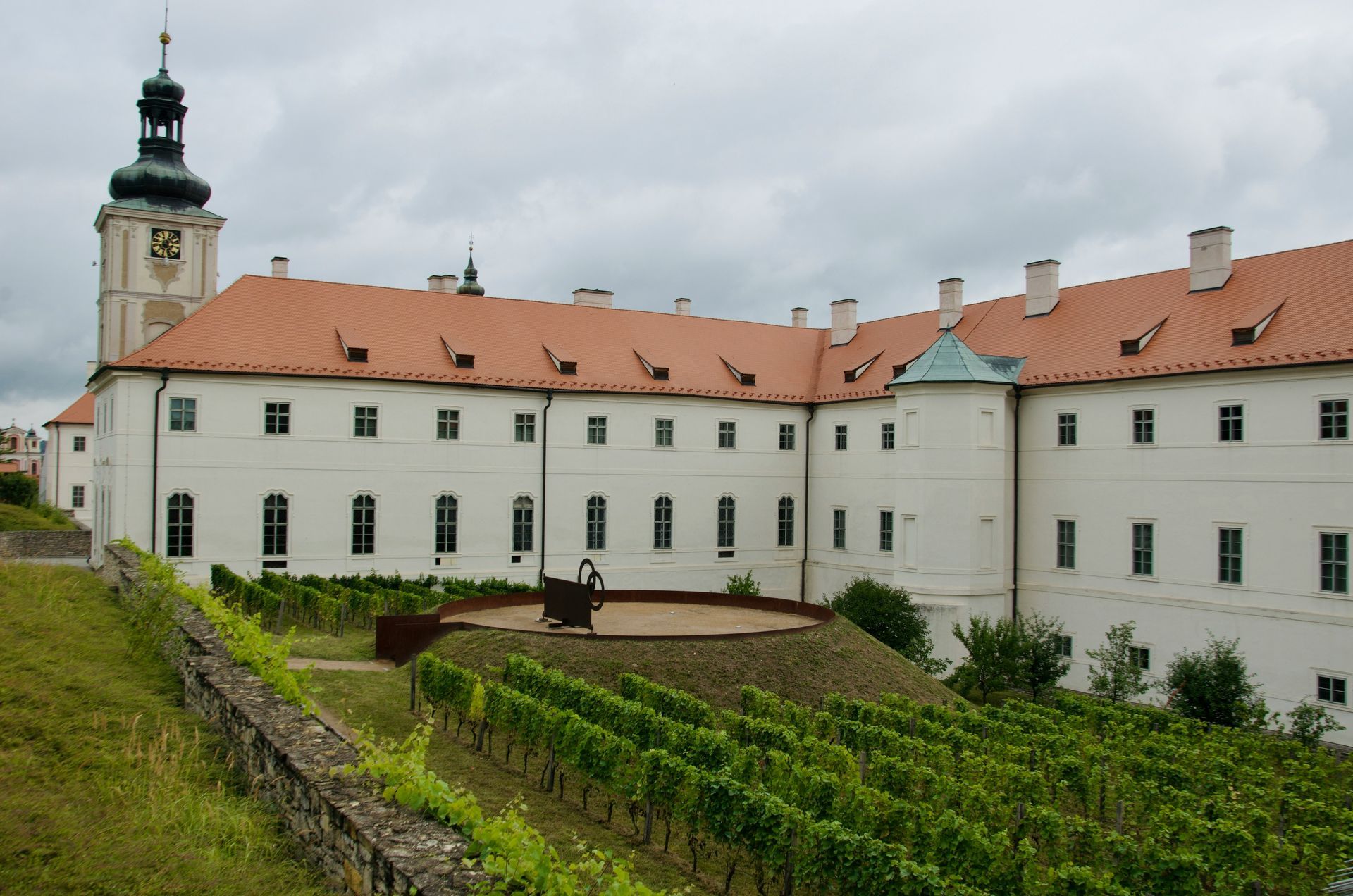Spreading Smile across the globe
Hidden Gems of Northern Italy
Hidden Gems of Italy are a testament to the country's diverse and enchanting beauty, often concealed from the traditional tourist routes. While Italy is celebrated for its iconic cities like Rome, Florence, Venice, and the Amalfi and Cinque Terre coasts, it's the lesser-known destinations that promise a unique journey. These unexplored regions offer travellers a chance to experience Italy's authentic culinary delights, rich historical narratives, and stunning natural landscapes. From the northern reaches to the southern shores, these Hidden Gems of Italy reveal a different facet of this remarkable nation.
Lake Orta - Piedmont
Hidden Gems of Italy come to life at Lake Orta, tucked away near the Swiss border in the heart of Piedmont. This hidden paradise often evades the spotlight compared to its more famous counterparts like Lake Como and Lake Garda. The historic town of Orta San Giulio, with its Baroque and Medieval architecture, cobbled streets, and idyllic Piazza Motta, enchants visitors. The glistening waters of the lake itself invite moments of serenity. What makes Lake Orta truly extraordinary is the mysterious island at its centre—a tranquil sanctuary inhabited by resident nuns.
Treviso - Veneto
Among the Hidden Gems of Italy, Treviso stands as a city in the Veneto region that retains its genuine northern Italian charm. Meandering through its narrow cobbled lanes, picturesque canals, and medieval city walls feels like a step back. Positioned on the fringes of the renowned Prosecco wine region, Treviso provides a delightful excuse for an aperitivo with a glass of Italy's renowned sparkling Prosecco.
Aosta Valley
Nestled among the bordering landscapes of Switzerland and France, the Aosta Valley showcases breathtaking alpine scenery, perched castles, and traditions that thrive throughout the year. When spring and summer arrive, the region's walking trails entice explorers. This season also brings lively festivals that celebrate folk traditions that date back to medieval times. Be sure to savour the local cheese Fontina, a culinary delight that embodies the spirit of this Hidden Gem of Italy.
Alba - Piedmont
Alba, a sought-after destination among Italy's hidden gems, is situated in the vineyards of the Langhe Hills. Once adorned with a hundred towers, Alba exudes a charming rural ambience. It's renowned for its autumn truffle festival, a gastronomic event that captures the essence of the region. Alba is also celebrated for its dark chocolate, hazelnut groves, white truffles, and prestigious wineries. It's from this very region that the sought-after Barolo wine originates.
Camogli - Liguria
Camogli, a typical and vibrant Italian seaside village on the Ligurian Riviera di Levante, perfectly embodies the spirit of the Hidden Gems of Italy. Towering, brightly painted houses dominate the town, and it has become a magnet for visitors seeking pristine beaches, Ligurian cuisine, the rustic fishing marina, Italian culture, and a tranquil natural setting. Camogli has earned its reputation for culinary excellence, focusing on fish and seafood, particularly anchovies and tuna, as well as the iconic pesto sauce made from basil and pine nuts.
Brescia - Lombardy
Hidden Gems of Italy often come alive through history, and Brescia is no exception. In this small city, history unfolds through a tapestry of architectural styles, spanning Roman, Medieval, Renaissance, Baroque, and even Art Deco. Walking through Brescia feels like a journey through time, and a visit to the captivating Piazza della Loggia, framed by a stunning Venetian-style palace at its heart, is a must for history enthusiasts.
Trieste
Trieste is a refreshingly unique destination, an Italian city positioned near the Slovenian border with its dialect that's a delightful blend of Austrian-German, Greek, Croatian, and Italian. Trieste's neoclassical waterfront is a sight to behold, with its marina brimming with stylish, glimmering yachts. The city's offerings include clear blue skies, expansive sandy beaches, city lidos, and the surrounding vineyards. Trieste is a Hidden Gem of Italy that belongs on every traveller's Northern Italian itinerary.
Modena - Emilia-Romagna
Modena is famed for its Hidden Gems of Italy, including balsamic vinegar, Luciano Pavarotti, the Romanesque cathedral, and the nearby Ferrari museum. Beyond these illustrious attractions, Modena reveals a treasure trove of remarkable restaurants. Massimo Bottura's Osteria Francescana has twice earned a place among the world's top 50 eateries, showcasing the culinary excellence of this Hidden Gem. While in Modena, don't miss the chance to savour local specialities like stuffed tortellini and sparkling Lambrusco wine, the perfect complement to your gastronomic journey.
Chiusa / Klausen - South Tyrol
Chiusa, also known as Klausen, is one of Italy's most picturesque villages. It is situated on the banks of the Isarco River in the South Tyrolean region near the Austrian border. Chestnut groves, green fields, vineyards, and farmsteads surround the town. In the village itself, visitors are captivated by narrow alleyways, coats of arms, large bay windows, crenellated facades, and the two main squares.
Ravenna - Emilia-Romagna
Ravenna offers a treasure trove of experiences among the Hidden Gems of Italy. This city is a feast for the senses, with its diverse offerings of food, music, art, culture, history, beaches, wine, and mosaics. Ravenna is home to eight UNESCO-listed sites, making it a must-visit for history and art enthusiasts. It's also known for its two-month-long music festival, Dante Alighieri's tomb, local culinary delights, nearby beach resorts, and the opportunity to explore pinewood forests. The city's fame is derived from its stunning mosaics, dating from the fifth and sixth centuries, scattered throughout the town.
In conclusion, Italy's Hidden Gems invite you to embark on a journey less travelled, where the rich tapestry of history, diverse cuisine, and breathtaking landscapes come to life. These lesser-known destinations provide an authentic Italian experience, away from the bustling crowds, revealing the nation's soul in its purest form. Explore these Hidden Gems to uncover Italy's hidden treasures.
Hidden Gems of Central Italy
Hidden Gems of Italy beckon the adventurous traveller to explore the lesser-known treasures that this remarkable country holds. From the picturesque valleys of Tuscany to the medieval charm of Umbria, the mysterious landscapes of Molise, and the architectural wonders of San Gimignano, these destinations promise unforgettable experiences.
Garfagnana - Tuscany
The Garfagnana region is a hidden gem in the beautiful Tuscan valley north of Lucca. It is crossed by the Serchio River, and the landscape is characterized by fertile greenery, rugged mountains, and charming villages. Outdoor activities such as hiking, walking, and mountain biking are enjoyed by many people in this area. Garfagnana is home to several one-of-a-kind attractions, including a ghost town, a wind cave, and the Devil's Bridge at Borgo a Mozzano.
Gubbio - Umbria
Umbria hides many treasures, and a particular favourite among Hidden Gems of Italy is the Medieval hilltop town of Gubbio. Gubbio, a city with a history dating back over 2,000 years, is a maze of cobbled streets and stone buildings that have been perfectly preserved. Visitors can take a cable car to the summit of Mount Ingino to enjoy panoramic views of the surrounding area. In addition, Gubbio hosts Italy's oldest event, the Corsa dei Ceri, in which teams race through the streets carrying massive wooden candles.
Molise
Molise is Italy's second-smallest region and one of its best-kept secrets. Hidden Gems of Italy are plentiful here. The picturesque town of Agnone is renowned for its artisanal bells, produced by the oldest family-run bell foundry in the world. Meanwhile, Campobasso, the regional capital, boasts a stunning medieval old town. Molise offers a captivating mix of historical charm and natural beauty, with rugged mountains, rolling hills, and pristine beaches along the Adriatic coast.
San Gimignano - Tuscany
Nestled in the heart of Tuscany, San Gimignano boasts medieval architecture and, of course, its famous towers. The town's historic centre is a UNESCO World Heritage site, known for its fourteen stone towers that once symbolised wealth and power. San Gimignano offers a glimpse into medieval Tuscany, with well-preserved streets and squares that transport visitors to another time. Besides the towers, make sure to explore the Collegiate Church and indulge in the local Vernaccia wine, a crisp white wine produced in the region.
Spello - Umbria
Another gem in the heart of Italy, Spello enchants visitors with its winding medieval streets and stunning floral displays. Known as the "Città Infiorata" or "flower town," Spello hosts the Infiorata festival, during which the streets are carpeted with intricate flower petal designs. This event occurs in early June and is a magnificent spectacle. Outside of the festival, Spello's charm continues with its well-preserved historic centre and beautiful churches.
Trulli of Alberobello - Apulia
Apulia, or Puglia, is famous for its unique trulli houses, and Alberobello is the epicentre of this architectural marvel. These whitewashed conical homes are a UNESCO World Heritage Site that offers a glimpse into the region's history. Visitors can even stay in trulli that have been converted into accommodations, providing a truly immersive experience.
Norcia - Umbria
Nestled in the Sibillini Mountains, Norcia is renowned for its gastronomy. This charming town produces exceptional cured meats, particularly prosciutto and salami. For food enthusiasts, Norcia is a true Hidden Gem of Italy. Explore local shops, taste the region's specialities, and visit the beautiful town square. Nature enthusiasts will also find hiking trails and natural beauty in the nearby Monti Sibillini National Park.
Montefalco - Umbria
Montefalco is often called the "Balcony of Umbria" for its stunning views over the surrounding valley. This charming town is also known for its wine, particularly Sagrantino, one of Italy's most robust red wines. Montefalco's medieval centre is picturesque and hosts several churches with remarkable frescoes, making it a cultural and gastronomic gem.
Castelluccio di Norcia - Umbria
High in the Sibillini Mountains, Castelluccio di Norcia is a quaint village known for its stunning wildflower blooms in late spring and early summer. The surrounding plateau becomes a colourful tapestry, attracting photographers and nature enthusiasts. Besides the flowers, visitors can enjoy hiking and take in the breathtaking scenery. Hidden Gems of Italy like Castelluccio di Norcia provide a unique connection to nature and the changing seasons.
In the heart of Italy, a treasury of Hidden Gems awaits the intrepid traveller. From the mysterious ghost town of Garfagnana to the ancient charms of Gubbio, the enchanting landscapes of Molise, and the medieval splendours of San Gimignano, these lesser-known destinations reveal Italy's diverse beauty and rich history. Journey through the tranquil streets of Spello, marvel at the unique trulli houses in Alberobello, savour the culinary delights of Norcia, and bask in the vibrant blooms of Castelluccio di Norcia. These Hidden Gems of Italy promise an unforgettable adventure in a land of timeless wonder.
Hidden Gems of Southern Italy
Italy, a land of rich history, captivating art, and exquisite cuisine, is known for its iconic cities and world-famous landmarks. Despite the tourist-filled streets and crowded piazzas, the country holds many hidden gems—lesser-known destinations that offer a more intimate and authentic experience. These places, tucked away in various corners of Italy, are a testament to the nation's diverse and enchanting beauty, waiting to be explored by the discerning traveller. From medieval towns perched atop hills to charming coastal villages and ancient archaeological sites, the Hidden Gems of Italy promise unique adventures and unforgettable memories.
Civita di Bagnoregio - Lazio
Civita di Bagnoregio is often called the "Dying Town" because of its gradual erosion over the centuries. This medieval village is perched on a hilltop and can only be reached by a long footbridge. It's a unique destination, seemingly suspended in time, and is the perfect Hidden Gem for history buffs and photographers.
Matera - Basilicata
Matera, known for its cave dwellings, is one of Italy's most intriguing and unique destinations. The Sassi di Matera, a historic cave settlement, is a UNESCO World Heritage Site. Matera is gaining popularity but still qualifies as one of the Hidden Gems of Italy. Touring this labyrinth of stone-carved rooms and narrow streets offers an incredible historical journey.
Sperlonga - Lazio
Sperlonga is a charming coastal town characterized by its pristine beaches, winding alleys, and picturesque piazzas. Nestled between Rome and Naples, Sperlonga is often overlooked by travellers. A visit here reveals a relaxed and authentic Italian atmosphere, perfect for strolls and seaside relaxation. Take advantage of the Grotto of Tiberius, a cave once used as the emperor's villa and now a museum.
Paestum - Campania
The ancient ruins of Paestum, originally a Greek colony known as Poseidonia, provide an extraordinary window into Italy's history. The temples are exceptionally well-preserved, ranking among the best-preserved in the world. Paestum is also home to a fascinating archaeological museum that displays artefacts from the site. Enjoy a step back in time amid the Hidden Gems of Italy.
Castro - Apulia
Castro, a picturesque coastal town, boasts a historic centre perched on a rocky outcrop. Visitors can explore ancient churches, fortifications, and a charming harbour. Castro also has sea caves that can be explored by boat. The region's cuisine is a seafood lover's paradise, making this town a Hidden Gem for food enthusiasts as well.
Scilla - Calabria
Scilla, an idyllic coastal village in Calabria, offers stunning sea views and hidden beaches. The town is known for the Ruffo Castle, which dominates the landscape, and the legendary sea monster Scylla from Greek mythology. The charming village is a serene and lesser-known alternative to some of the more crowded Italian seaside destinations.
San Marino
San Marino is a microstate surrounded by Italy and is one of the world's oldest republics. It's a destination that's often missed, making it a true Hidden Gem. San Marino boasts dramatic mountaintop views, historic architecture, and unique attractions like the Guaita Tower and the Palazzo Pubblico. For collectors, the country is also known for its beautiful stamps and coins.
Conclusion
Discovering the Allure of Hidden Gems of Italy
Hidden Gems of Italy offers travellers an authentic experience, far removed from the tourist-packed cities and famous landmarks. These lesser-known destinations unravel the genuine charm, culture, history, and culinary wonders that make Italy an endlessly fascinating country to explore. From the mountains of the North to the coasts of the South, each region holds its treasures, waiting to be discovered by those who venture off the beaten path. By exploring the Hidden Gems of Italy, you can craft a unique and unforgettable journey that deepens your appreciation of this incredible country. Plan your trip carefully, and you will be rewarded with the beauty, history, and flavours that characterize these enchanting places.
Wandering Through Czech Republic’s Historic Towns and Villages
Exploring Czech Republic villages offers travelers a journey into the heart of the country's rich history and authentic charm. While Prague’s iconic spires and bustling streets draw millions each year, the quieter towns and villages reveal an intimate side of the Czech Republic, steeped in centuries-old traditions and architectural marvels. Each village, from the fairy-tale setting of Český Krumlov to the Baroque elegance of Kroměříž, tells a story of its own. These destinations showcase a spectrum of styles, from medieval Gothic and Renaissance to folk-inspired Baroque, capturing the essence of Czech culture and heritage.
In these historic communities, time seems to slow down, allowing visitors to appreciate details that embody the country’s past: meticulously painted facades, serene village squares, and winding cobblestone streets. Whether wandering through UNESCO-listed Telč with its pastel-colored houses or exploring the preserved Jewish Quarter of Třebíč, each town reveals an important piece of Czech history and character. Embracing the local traditions and natural beauty of Czech Republic villages offers an enriching, off-the-beaten-path experience, where the allure of quiet streets and local crafts brings a deeper appreciation of the country’s vibrant cultural tapestry.
Český Krumlov: A Fairytale by the Vltava River
Though Český Krumlov has gained fame for its enchanting beauty, it remains a quintessential destination for those wanting to experience the magic of
Czech Republic villages. Nestled along the scenic Vltava River, this UNESCO World Heritage Site showcases the timeless charm found in historic Czech villages, with narrow, winding lanes and charming homes painted in pastel hues that exude warmth and character. The imposing Český Krumlov Castle, perched majestically atop a hill, provides panoramic views of the village below, inviting travelers to take in the sight of its red rooftops against a backdrop of lush landscapes. Wandering through Český Krumlov’s streets, visitors are surrounded by Renaissance and Baroque architecture, lovingly preserved to reflect the village’s storied past. This village is not only an architectural gem but also a hub of artistry; local galleries, traditional craft shops, and captivating performances bring the town’s cultural legacy to life. In Český Krumlov, the artistic spirit of Czech Republic villages shines brightly, offering an unforgettable journey back in time.
Telč: Renaissance Beauty in Southern Moravia
Telč is among the most enchanting
Czech Republic villages, renowned for its Renaissance allure and beautifully preserved town square. In the heart of Southern Moravia, Telč's pastel-colored houses with intricately designed gables form a breathtaking canvas against historic stone paths, each structure a testament to the village’s architectural heritage. Designated as a UNESCO World Heritage Site, Telč embodies the spirit of
Czech Republic villages with its meticulously restored Renaissance and Baroque architecture. As you stroll through the main square, you’ll find cozy cafés, charming art galleries, and boutique shops that sell local crafts, reflecting the town’s dedication to its cultural roots. The impressive Telč Castle, with its Renaissance halls and ornate Baroque chapel, adds an air of grandeur to this quaint village. Surrounded by tranquil countryside, Telč offers a serene escape from busier cities, allowing visitors to fully immerse themselves in the timeless beauty of
Czech Republic villages.
Hradec Králové: History Meets Modernity
Nestled among
Czech Republic villages that boast a rich history, Hradec Králové stands out for its unique blend of medieval charm and modern appeal. With origins tracing back to early medieval times, this town is famed for landmarks like the Gothic Church of the Holy Spirit and the towering White Tower, which together showcase a beautiful mix of Gothic, Renaissance, and Baroque architecture. Once a bustling trade hub, the historic marketplace now serves as a lively venue for cultural events and festivals, bringing the community together in celebration of tradition. Hradec Králové is also notable for its Art Nouveau and Modernist touches, visible in the town's thoughtful city planning, green public spaces, and striking modern architecture. This seamless integration of history and contemporary style gives Hradec Králové a distinctive atmosphere, appealing to those who seek a refreshing contrast between old-world elegance and modern-day creativity, making it a must-visit for admirers of
Czech Republic villages.
Kutná Hora: Medieval Splendor and Silver Mines
A gem among
Czech Republic villages, Kutná Hora is steeped in medieval history and architectural marvels that reflect its once-thriving silver mining industry. This wealth, accumulated over centuries, is proudly displayed in landmarks like St. Barbara’s Cathedral, a masterpiece of Gothic architecture featuring soaring spires, intricate stained glass, and vaulted ceilings that capture the grandeur of the town’s golden age. The Sedlec Ossuary, known as the "Bone Church," adds a unique twist to Kutná Hora’s Baroque influence, with its haunting yet fascinating display of human bones arranged in elaborate patterns. As you wander through Kutná Hora’s cobblestone streets and picturesque squares, you’ll feel the spirit of Czech Republic villages where history is vividly preserved, and time almost seems to stand still. The town’s charm lies not only in its monumental buildings but also in its quiet alleyways, inviting travelers to slow down and experience the authentic ambiance of a bygone era.
Holašovice: A Step Back into Rural Life
To experience the charm of
Czech Republic villages frozen in time, Holašovice offers an immersive journey into rural South Bohemia. Designated as a UNESCO World Heritage Site, this small village is famed for its exquisitely preserved Baroque folk architecture, known as "Holašovice Baroque." Its well-maintained 18th- and 19th-century farmhouses feature whitewashed facades adorned with floral and geometric motifs, capturing the distinct rural trends of historic Bohemia. Each structure reflects the skill and creativity of local artisans, lending the village a timeless elegance that feels like a step back into history. As you stroll through Holašovice’s quiet streets or explore the surrounding countryside on foot or by bike, you’ll find a peaceful escape in a
Czech Republic village that has preserved its original character, offering an unfiltered glimpse into the country’s rural heritage. Here, modernity feels miles away, allowing visitors to experience the beauty and simplicity of traditional Czech village life in an idyllic, pastoral setting.
Rožnov pod Radhoštěm: Folk Traditions and Outdoor Living
At the foot of the
Beskydy Mountains, Rožnov pod Radhoštěm embodies the spirit of
Czech Republic villages, blending folk heritage with breathtaking natural scenery. This village is famed for the Wallachian Open-Air Museum, one of Central Europe’s oldest and most expansive outdoor museums. Here, traditional wooden buildings recreate the architecture of historic villages, providing a window into Czech rural life. Skilled craftsmen demonstrate age-old trades like weaving, blacksmithing, and pottery, inviting visitors to engage with Czech folk culture firsthand. Rožnov pod Radhoštěm not only preserves the architectural essence of Czech villages but also immerses visitors in local traditions and customs. Beyond the museum, the village’s setting within dense forests and rolling mountains offers ample opportunities for hiking, cycling, and nature exploration. Its scenic landscapes and vibrant folk culture create a harmonious blend, making Rožnov pod Radhoštěm an enriching destination for those seeking the authentic charm of
Czech Republic villages along with opportunities to embrace the great outdoors.
Kroměříž: Gardens, Palaces, and Baroque Splendor
A gem among
Czech Republic villages, Kroměříž captivates with its grand Kroměříž Archbishop’s Palace and the exquisite Baroque gardens that have earned it a UNESCO World Heritage designation. The Baroque Flower Garden, an ornate masterpiece with meticulously designed geometric patterns, features vibrant flower beds, elegant fountains, and classical sculptures that make it an absolute must-see. Within the palace itself, visitors encounter a stunning display of Baroque architecture, from intricate frescoes on vaulted ceilings to rooms adorned with glittering chandeliers and lavish period furniture. The palace also boasts a renowned art collection, including works from Europe’s classical masters, adding an artistic depth to its historic appeal. Strolling through Kroměříž, you’ll find charming streets lined with historical buildings, riverside pathways, and cafes where you can relax and soak in the town’s timeless beauty. Kroměříž offers a harmonious blend of history, art, and nature, making it an unforgettable destination for those exploring the architectural and cultural wonders that
Czech Republic villages have to offer.
Třebíč: A Fusion of Jewish and Christian Heritage
In the heart of the
Czech Republic villages lies Třebíč, a town that uniquely bridges Jewish and Christian heritage in a harmonious blend of culture and history. This UNESCO World Heritage Site preserves one of Central Europe’s most complete Jewish Quarters, offering an evocative glimpse into a once-thriving community. As you meander through Třebíč’s narrow cobblestone streets, you’ll discover historic synagogues, the beautifully preserved Jewish cemetery, and traditional homes that transport you to a different era, revealing stories of Jewish life in Moravia. The town’s Christian heritage is equally impressive, marked by the Romanesque-Gothic grandeur of the St. Procopius Basilica, a marvel of medieval architecture with ornate interiors that captivate every visitor. Nestled along the serene banks of the Jihlava River, Třebíč’s fusion of Jewish and Christian landmarks creates a unique tapestry of Czech history. Beyond its architectural wonders, Třebíč offers a quiet charm typical of
Czech Republic villages, inviting visitors to explore its tranquil lanes, riverside spots, and cafes that preserve a distinct Moravian spirit.
Kutnahora: Best Gothic Town
Kutná Hora, one of the Czech Republic’s most captivating historic towns, offers a fascinating journey into medieval life and architecture. Once a booming silver mining center, it played a crucial role in the nation’s economy and has since retained much of its historic character, making it a highlight among Czech Republic villages. This UNESCO World Heritage Site brims with Gothic and Baroque architecture that recalls its prosperous past. Walking through the cobblestone streets, visitors find themselves immersed in Kutná Hora’s medieval charm.
A must-see is the awe-inspiring St. Barbara’s Cathedral, with its towering Gothic spires and intricate interior that reflect the town’s once-great wealth. Just as intriguing is the Sedlec Ossuary, or "Bone Church," known for its unique décor created from human bones—a haunting yet remarkable testament to Baroque artistry. Beyond its famous landmarks, Kutná Hora offers quiet squares, quaint cafés, and artisan shops, providing a peaceful retreat into the historical essence of Czech Republic villages.
Exploring Kutná Hora means experiencing both its architectural grandeur and the subtle, enduring spirit of its past, offering a distinctive glimpse into Czech history and the local village atmosphere that shaped it.
Conclusion:
Wandering through the Czech Republic villages offers an enchanting experience, where each town presents a unique blend of history, architecture, and charm. Away from the urban pulse of Prague, these villages provide a look into the Czech Republic’s heart and soul. Here, the ambiance is calm yet vibrant, as local customs and ancient stories echo through cobbled streets and well-preserved facades. These places aren’t just scenic; they are living narratives of Bohemian, Moravian, and Silesian heritage that have withstood the passage of time.
From the medieval aura of Český Krumlov to the Renaissance beauty of Telč, every village reveals a piece of Czech cultural heritage. Visitors can enjoy the serenity of historic squares, engage with artisans keeping traditional crafts alive, and appreciate the architectural marvels that dot the landscape. Exploring Czech Republic villages brings an intimate, enriching perspective on the nation, where local hospitality and timeless scenery create unforgettable memories. For those seeking genuine connections with culture and history, these villages are a beautiful reminder that the Czech Republic’s essence is often found beyond its bustling capital, in the quiet charm of its historic towns and villages.
Things To Do | Travel Information | Local's Favourites




